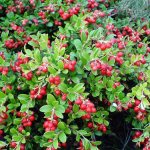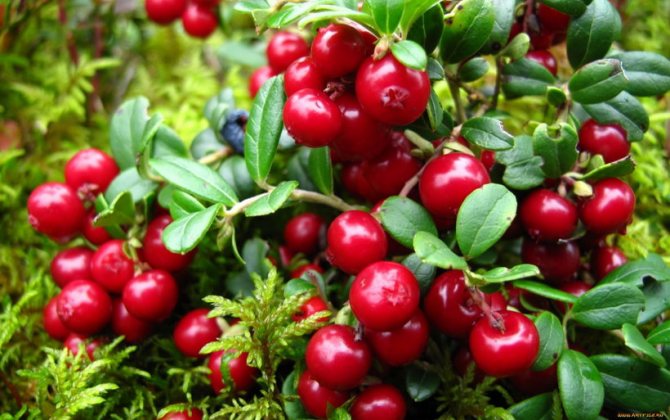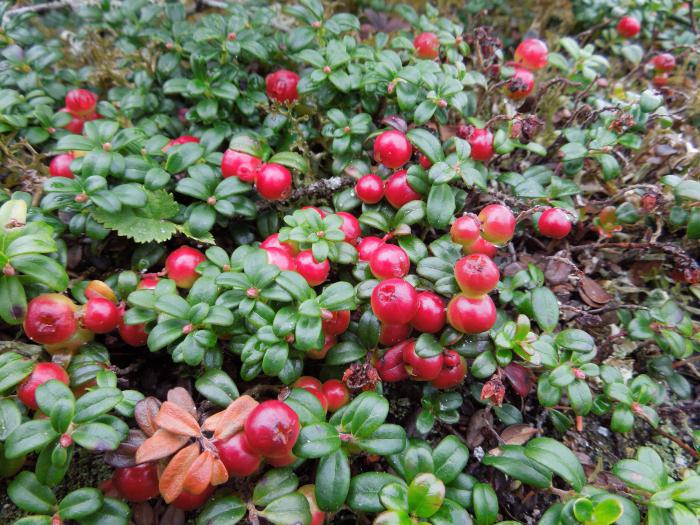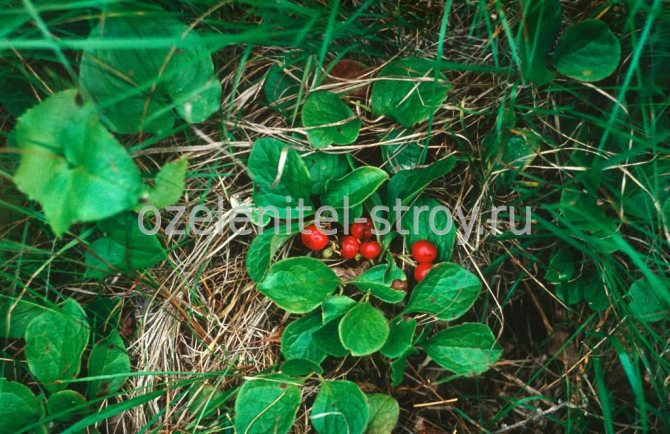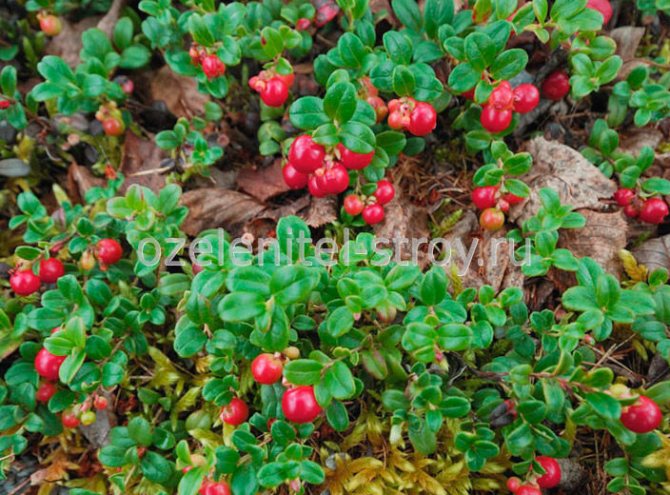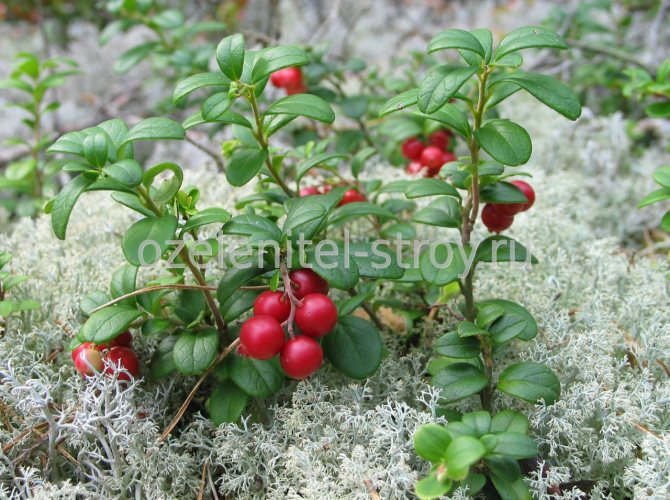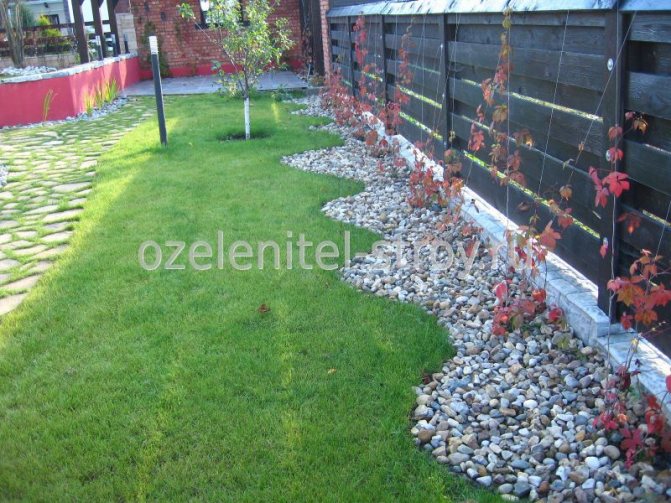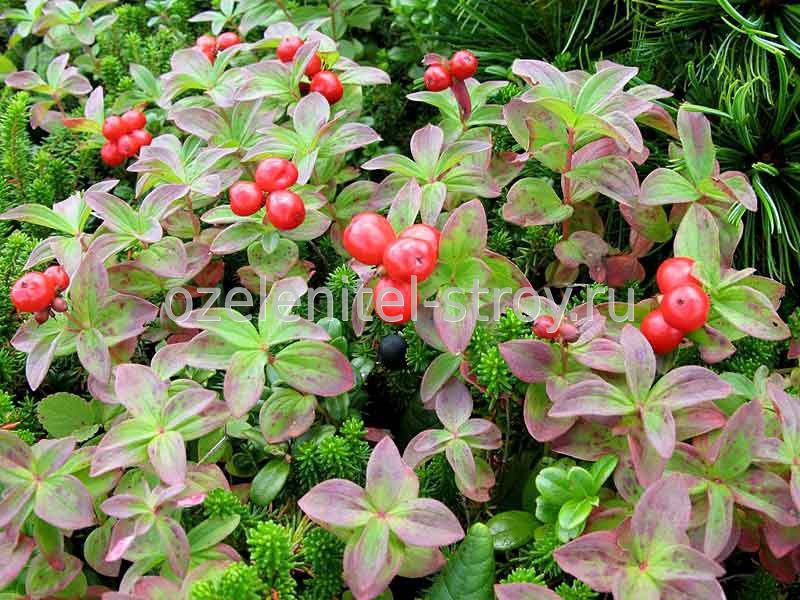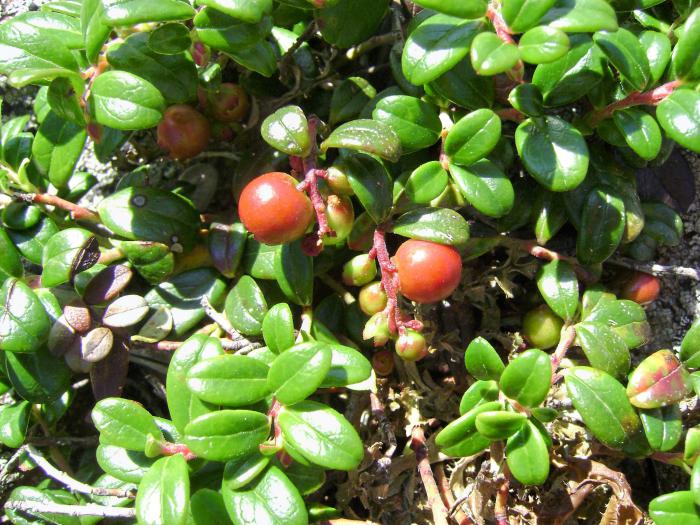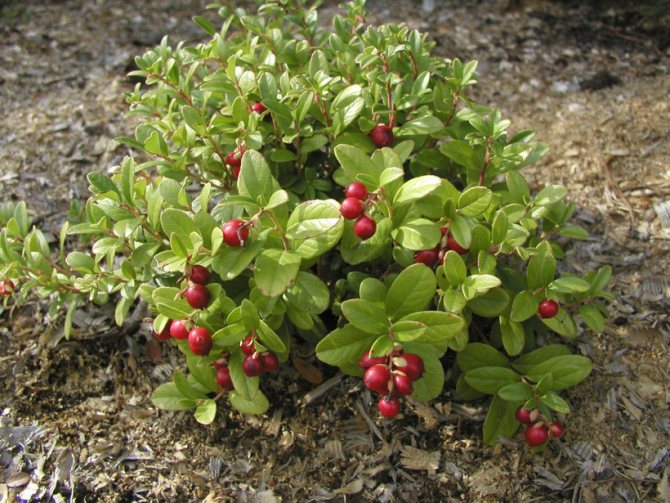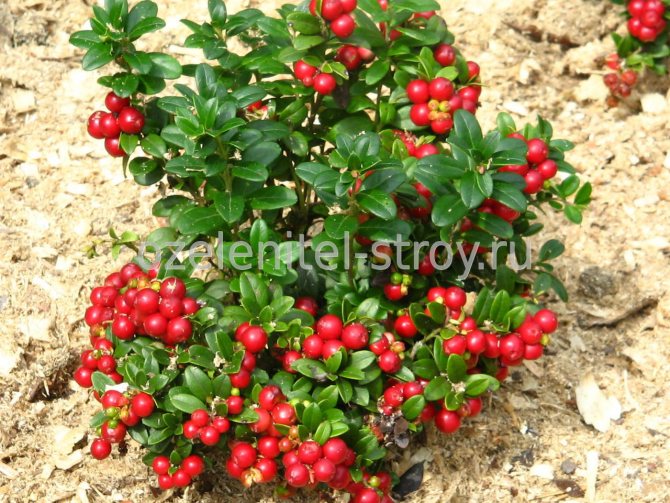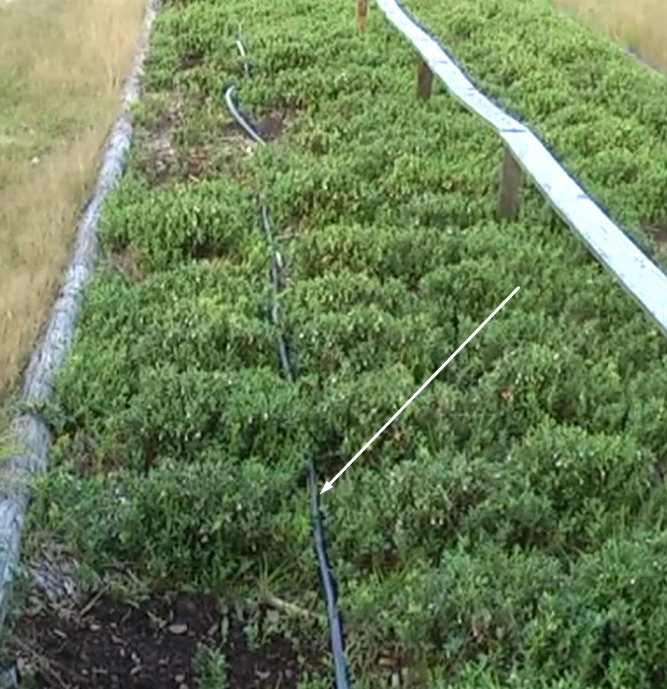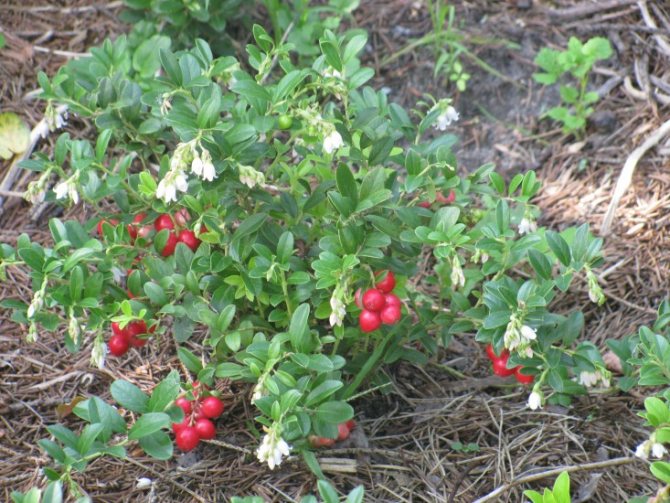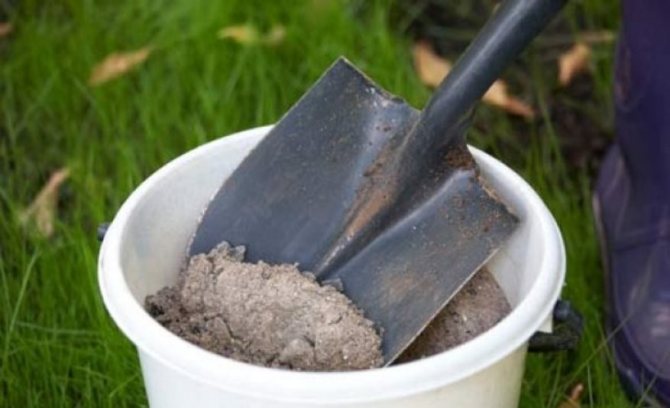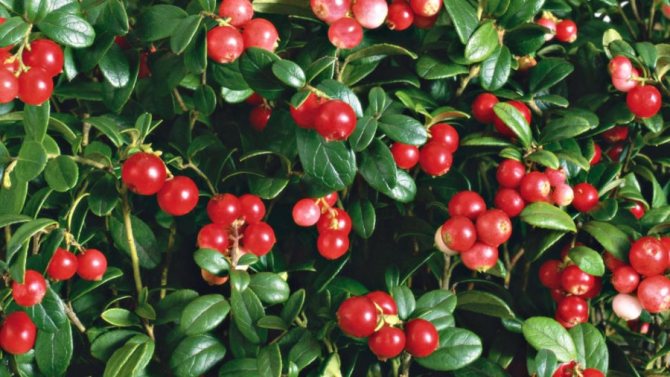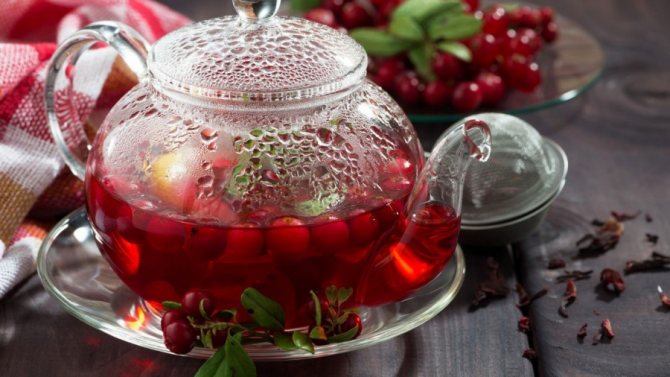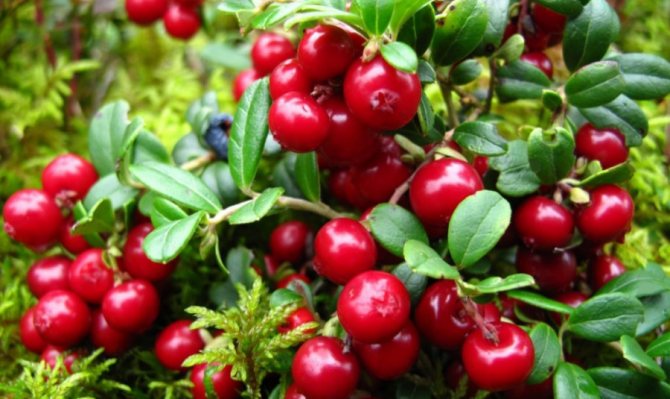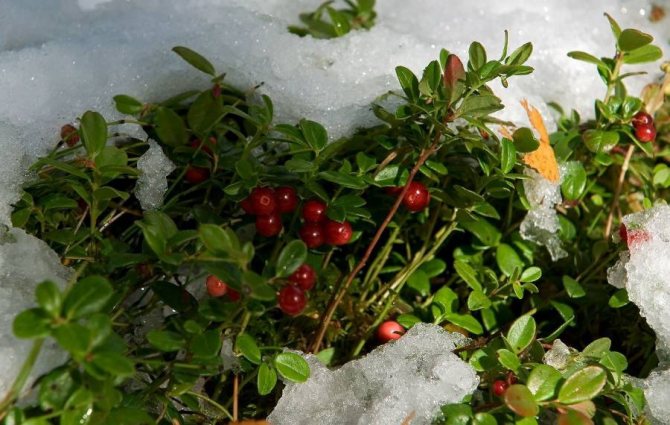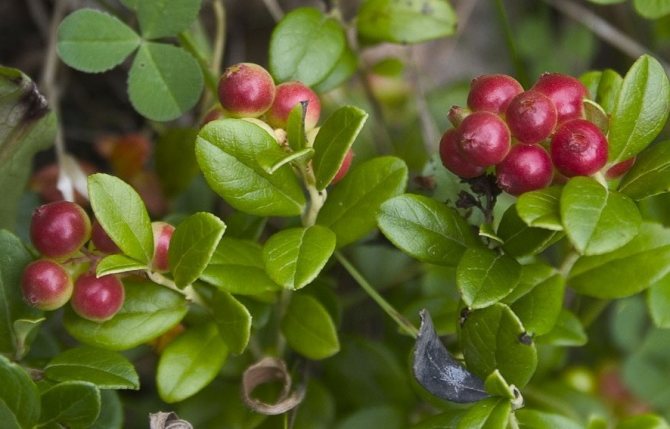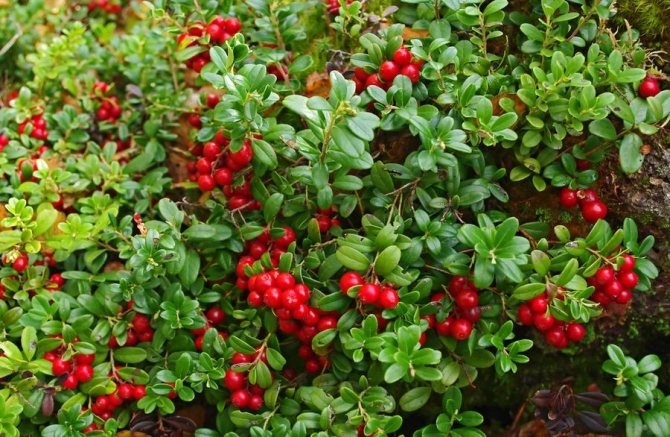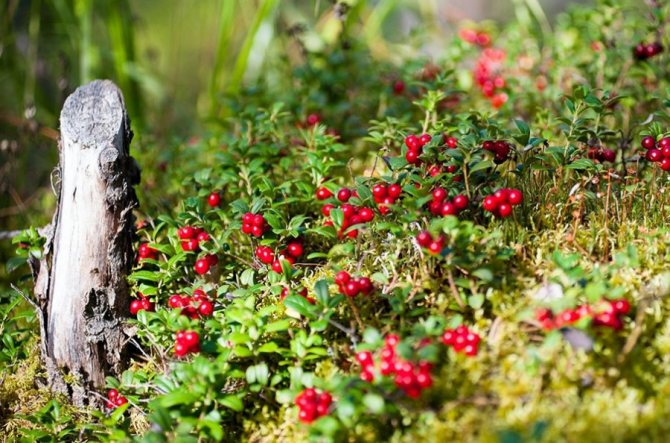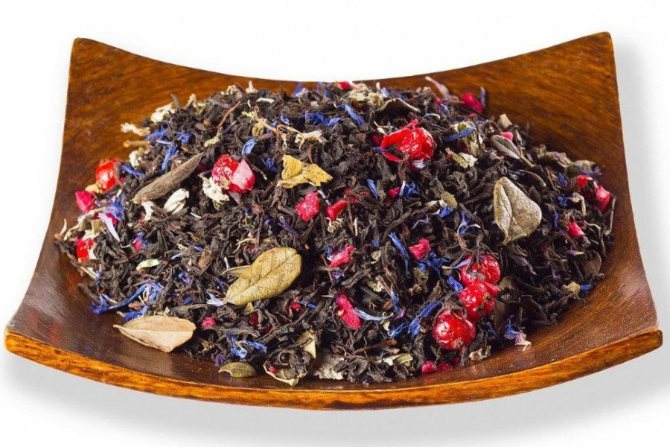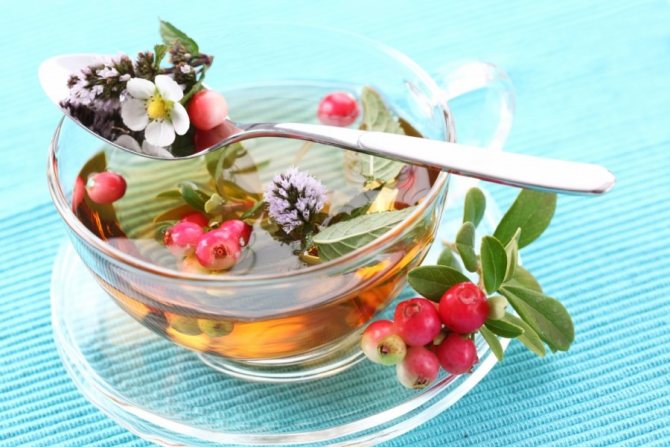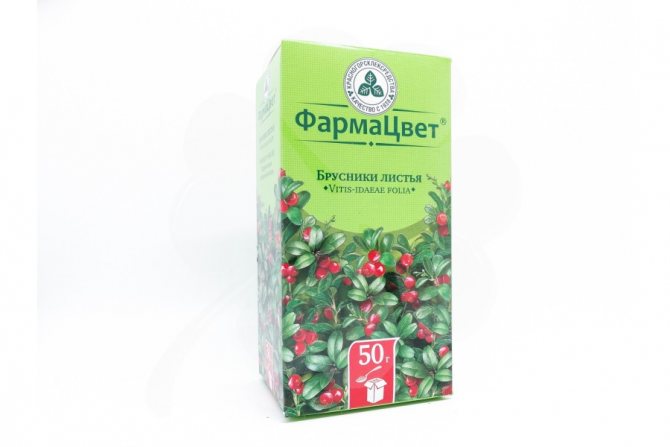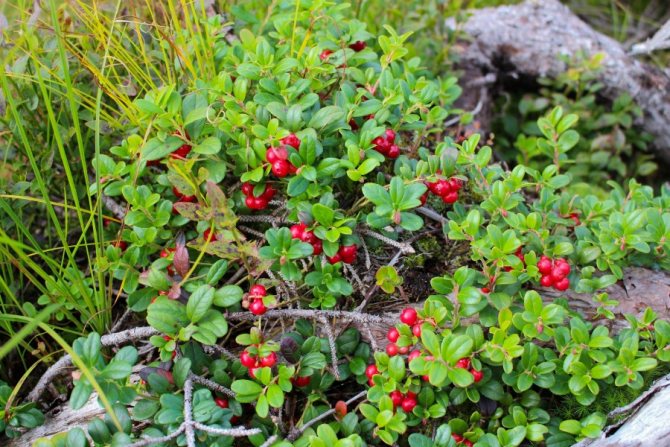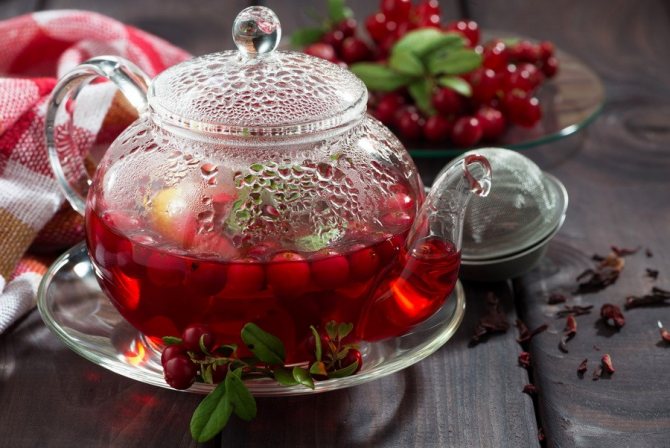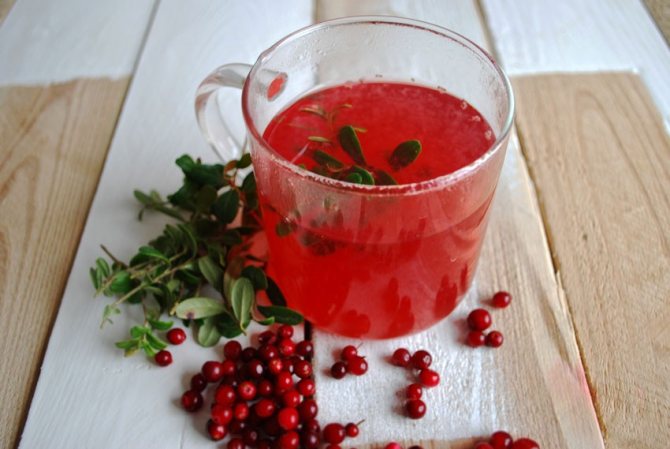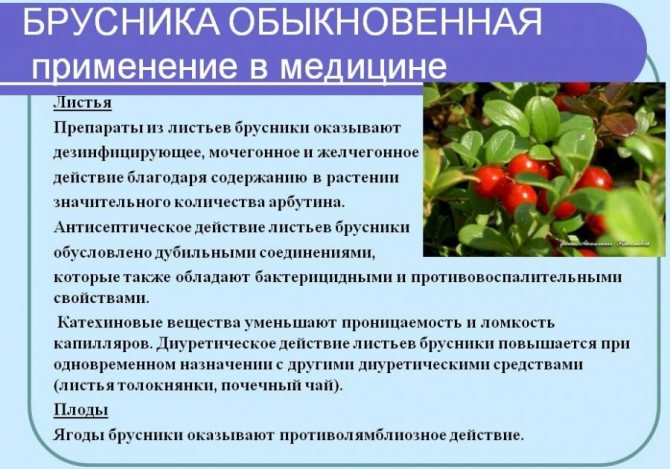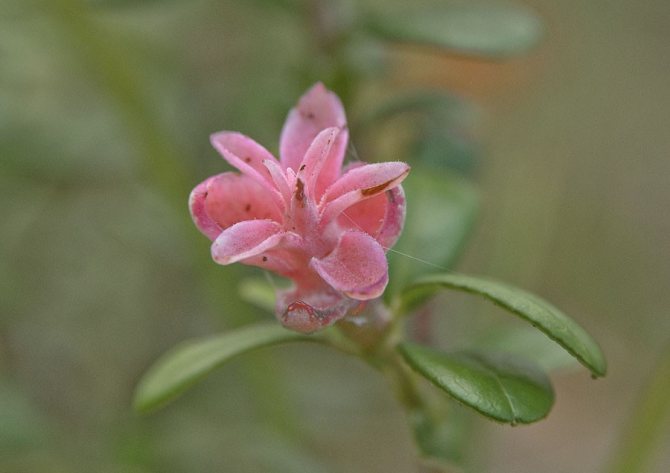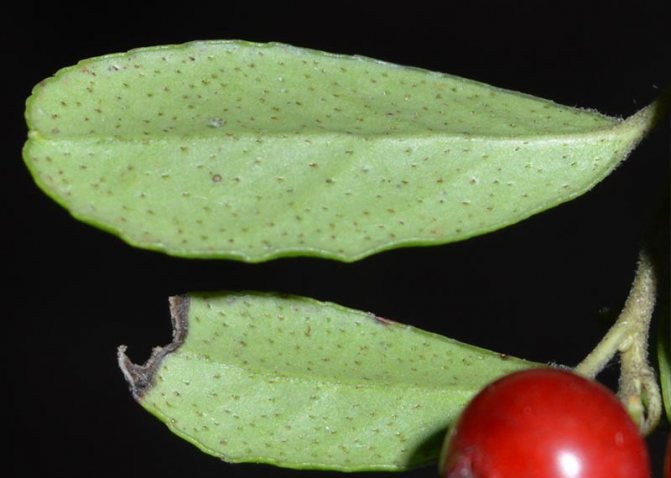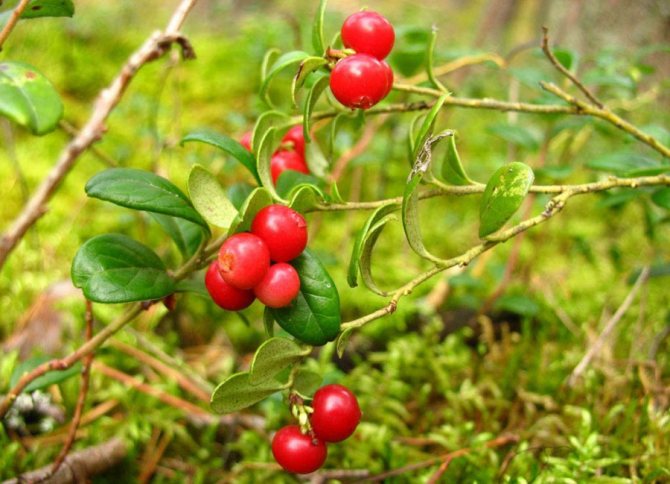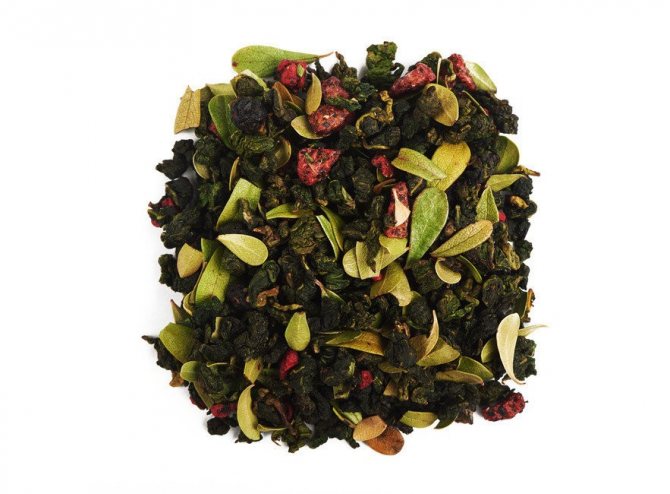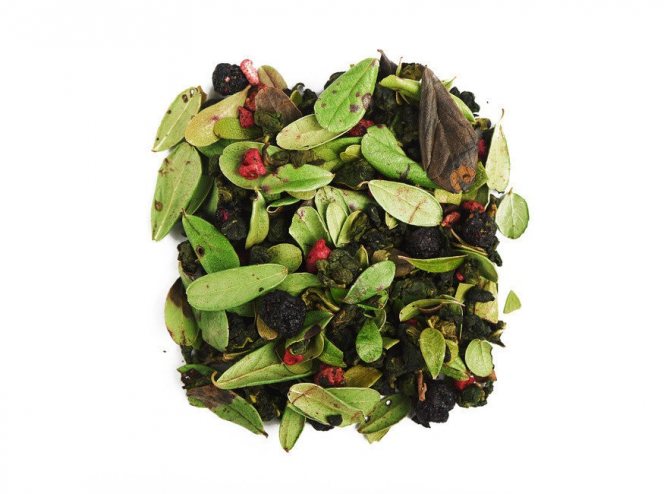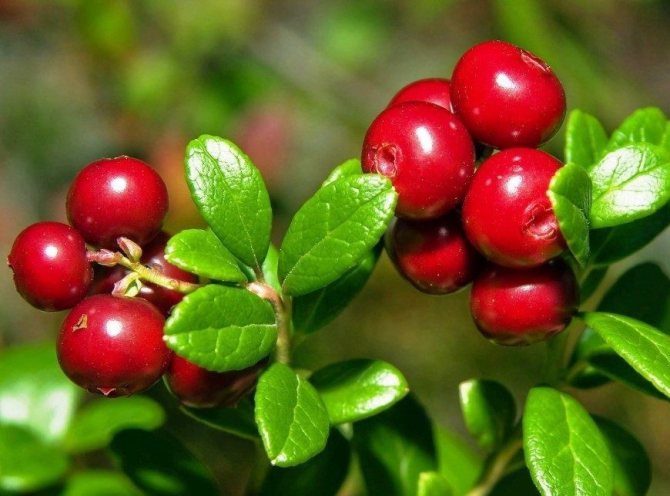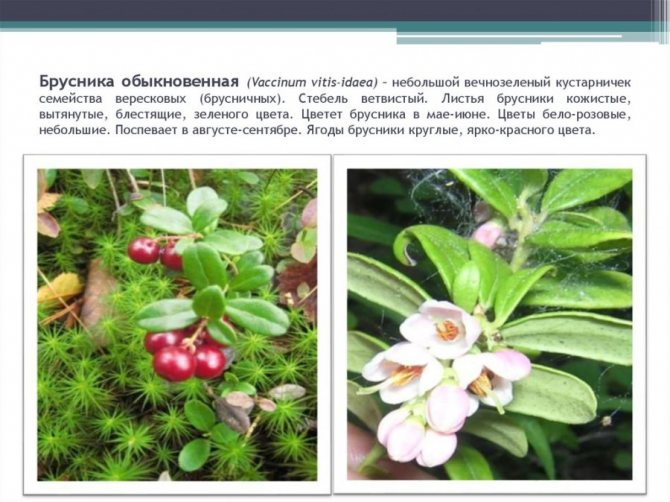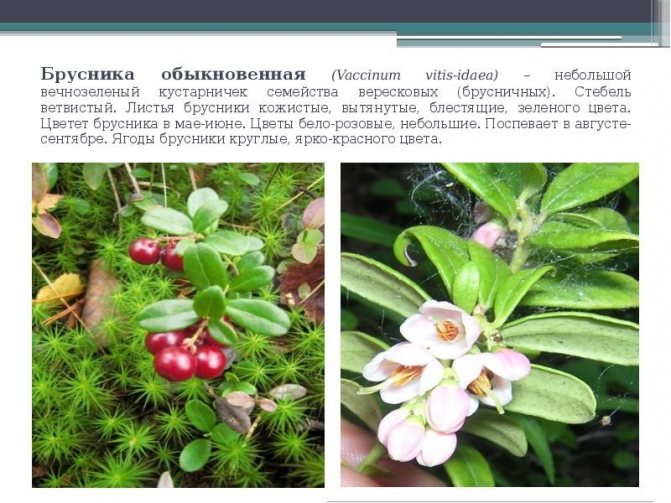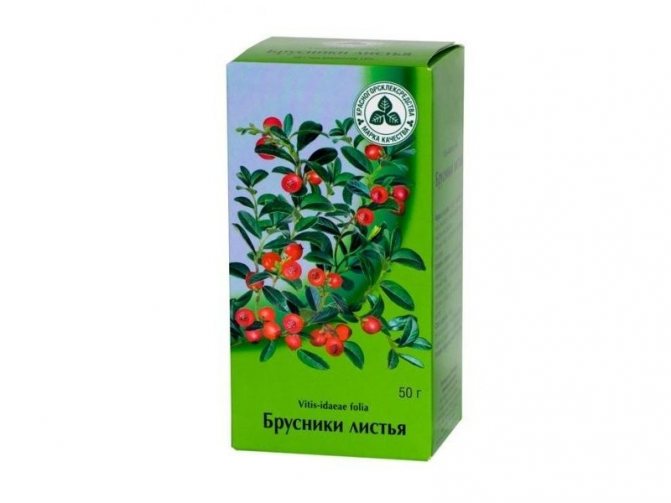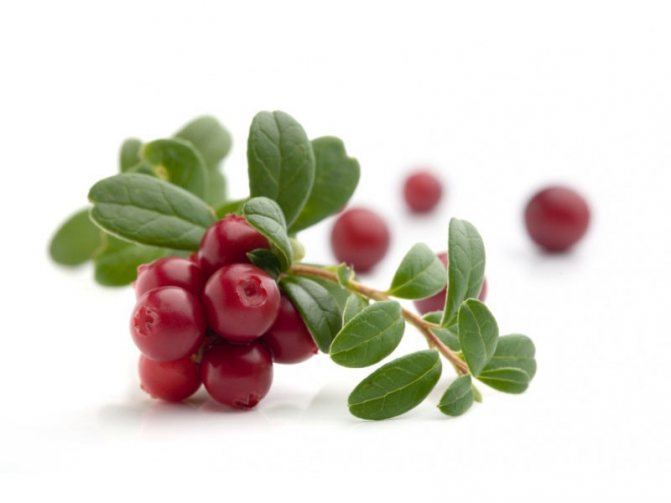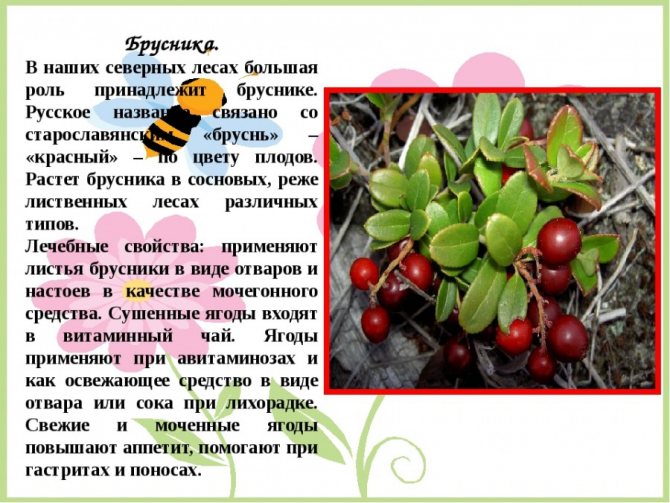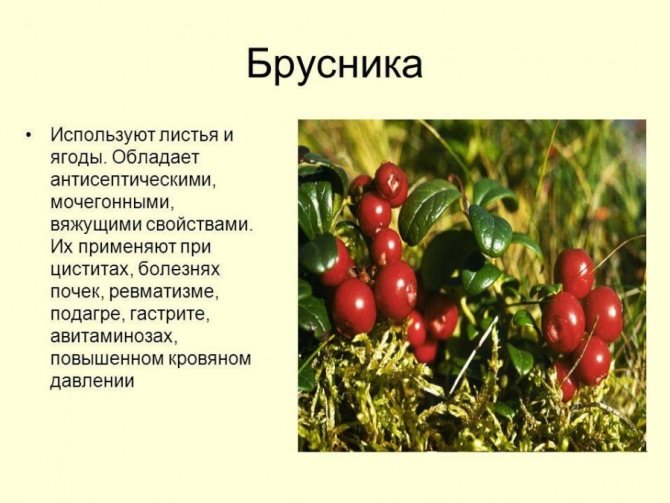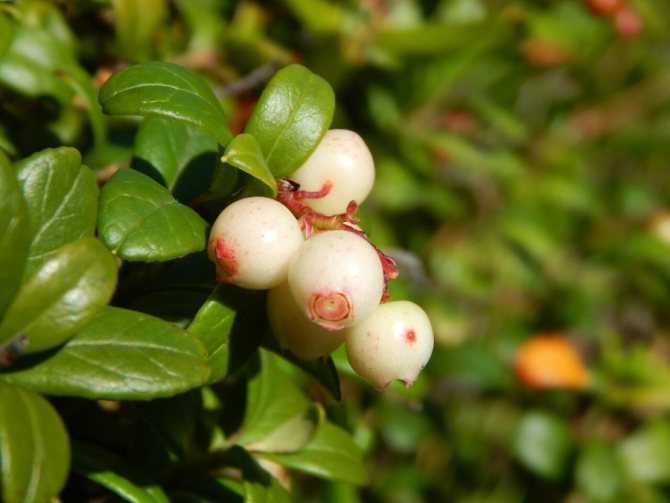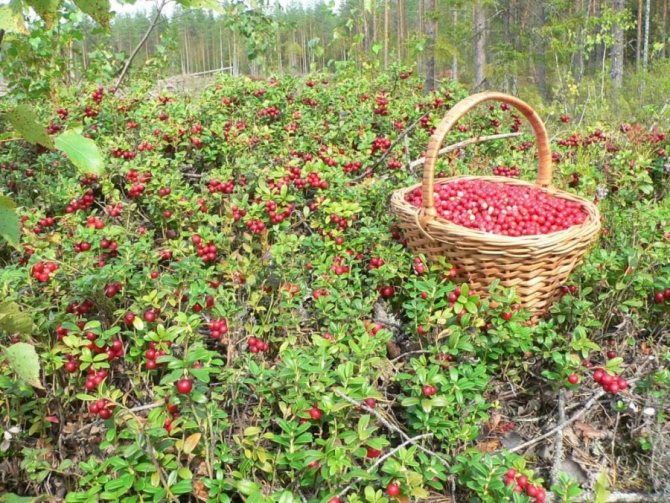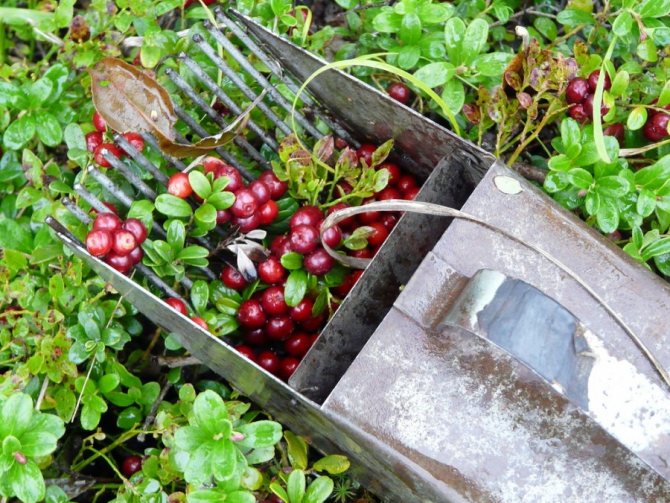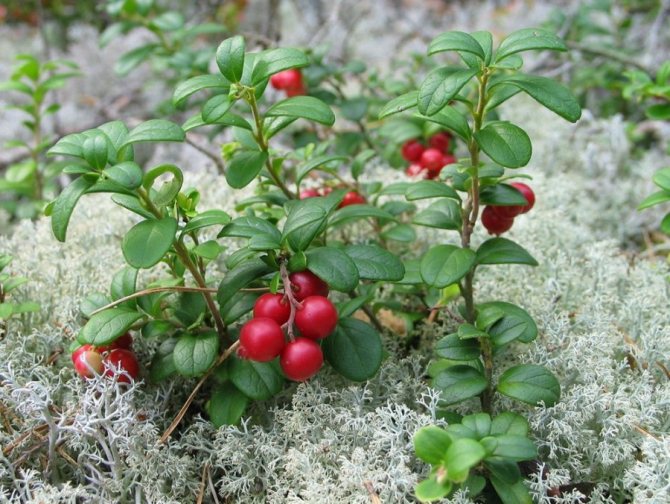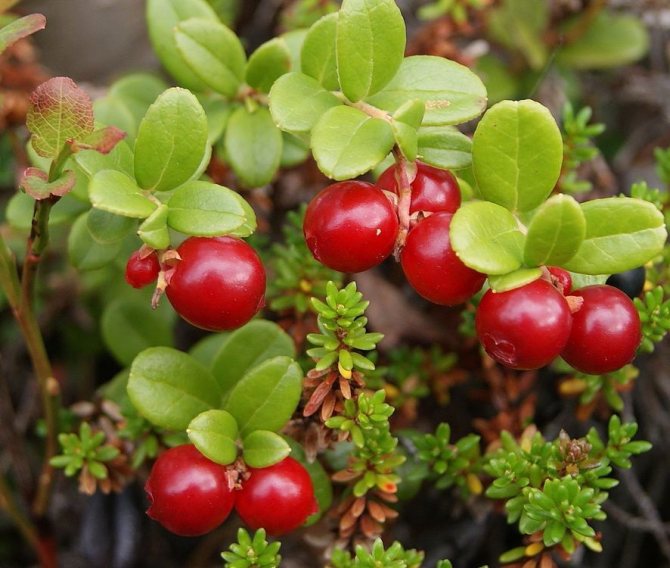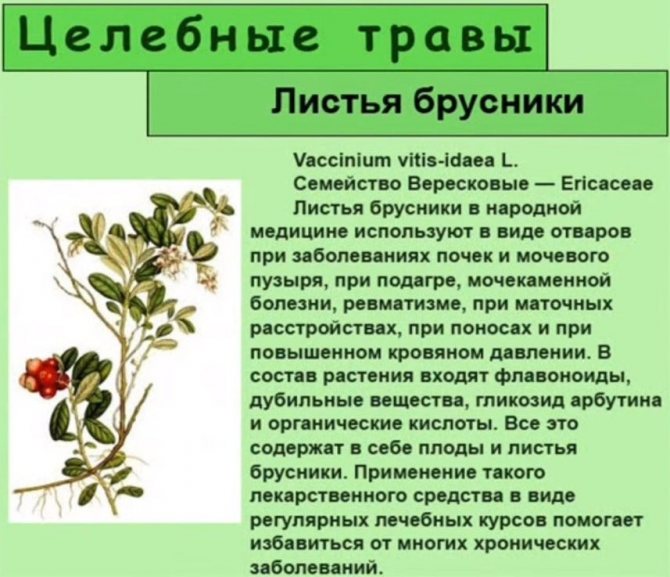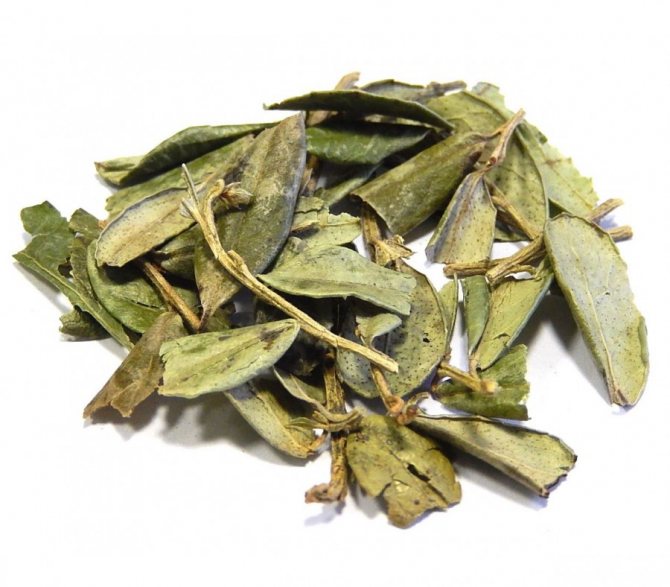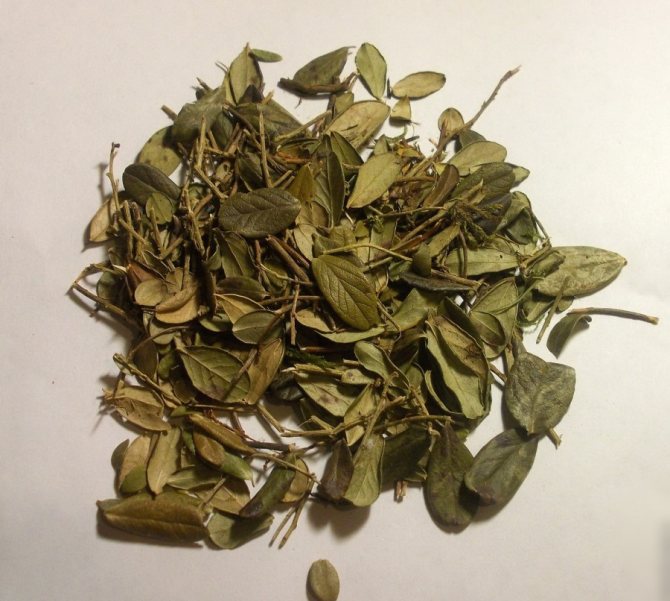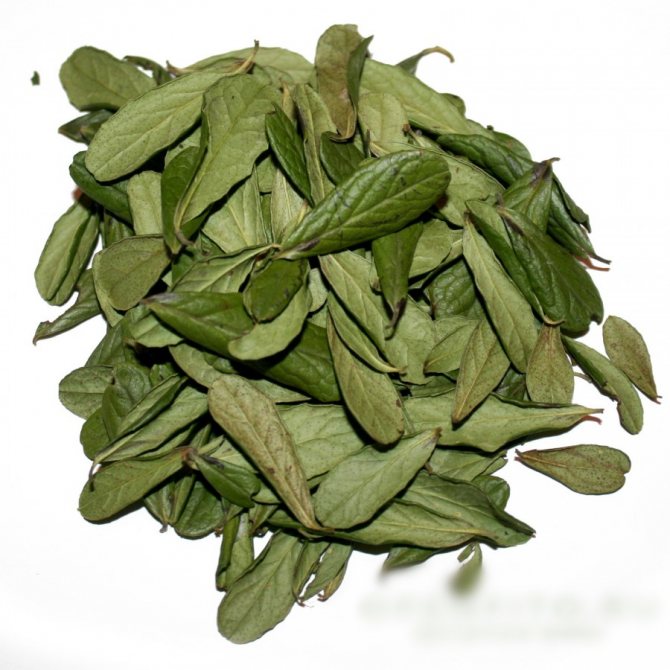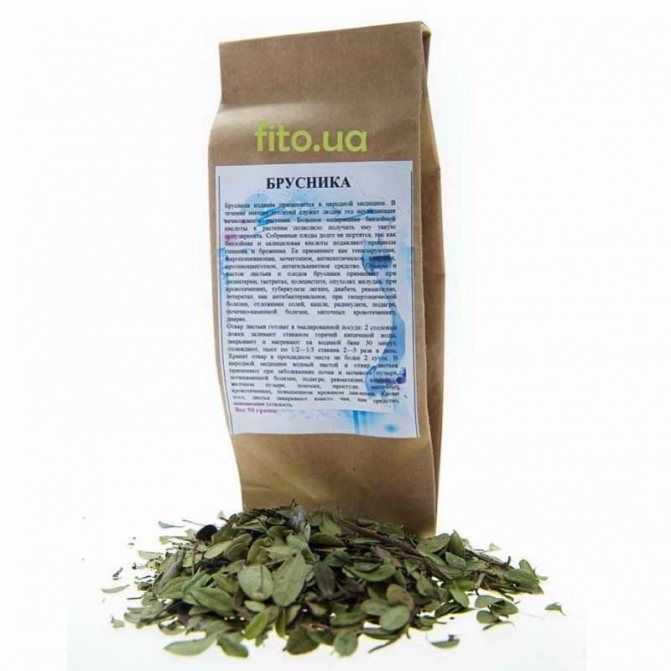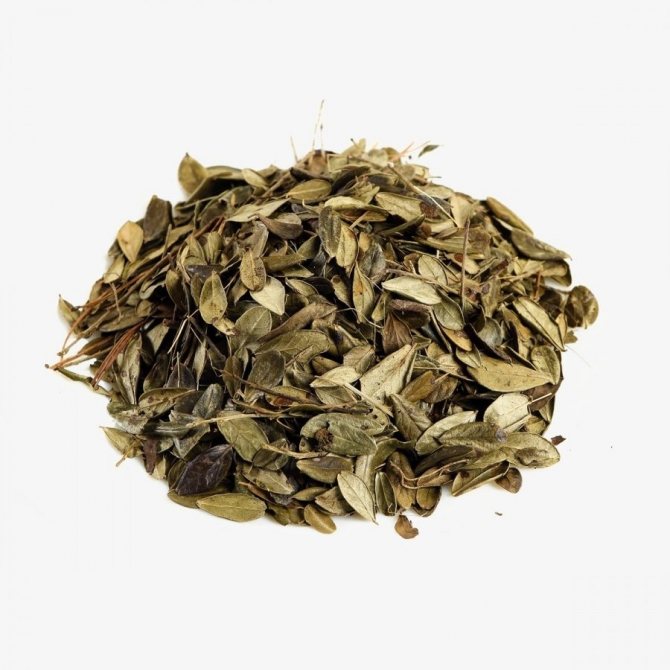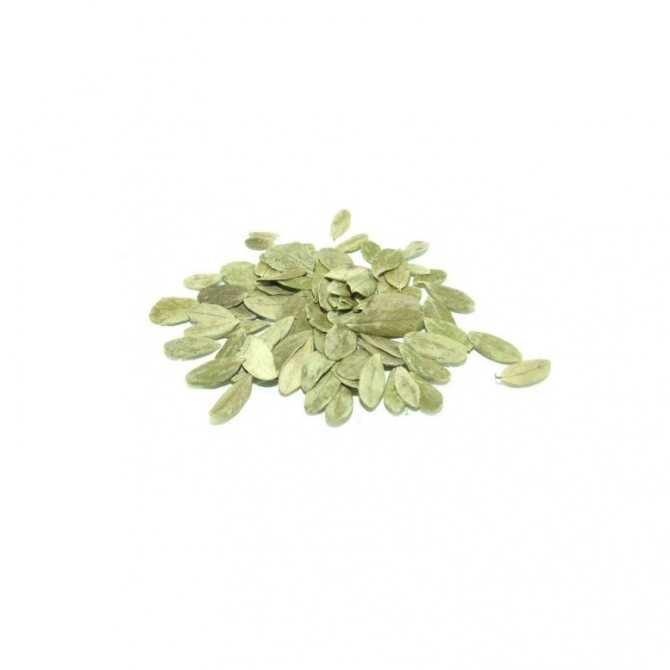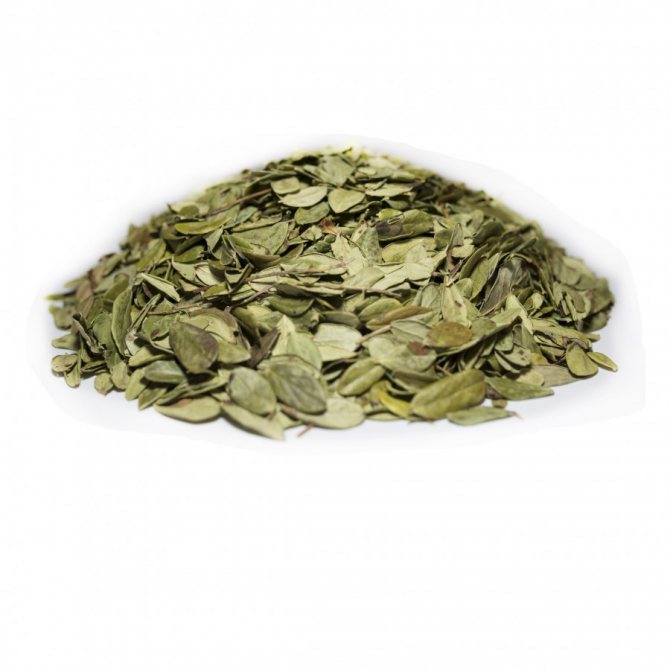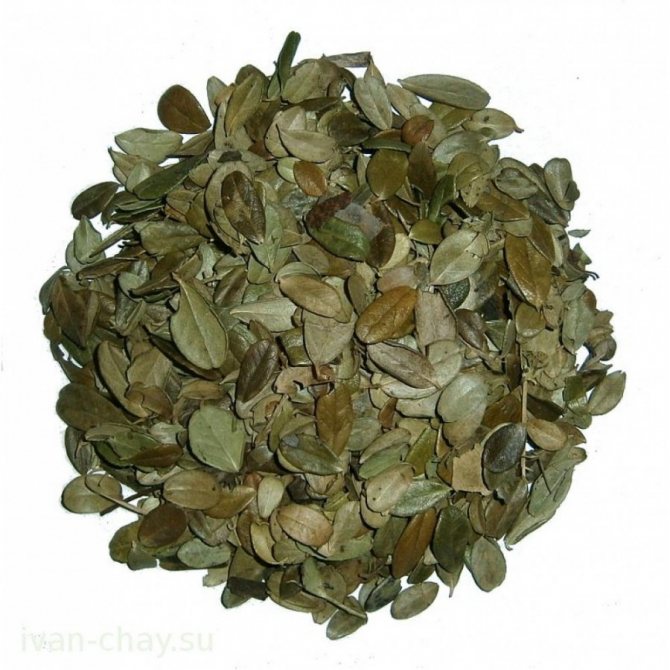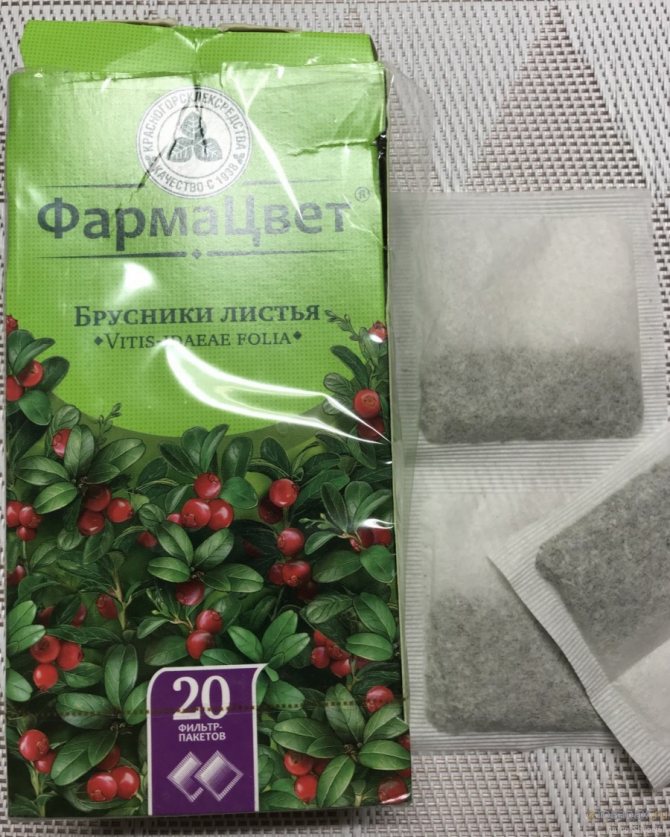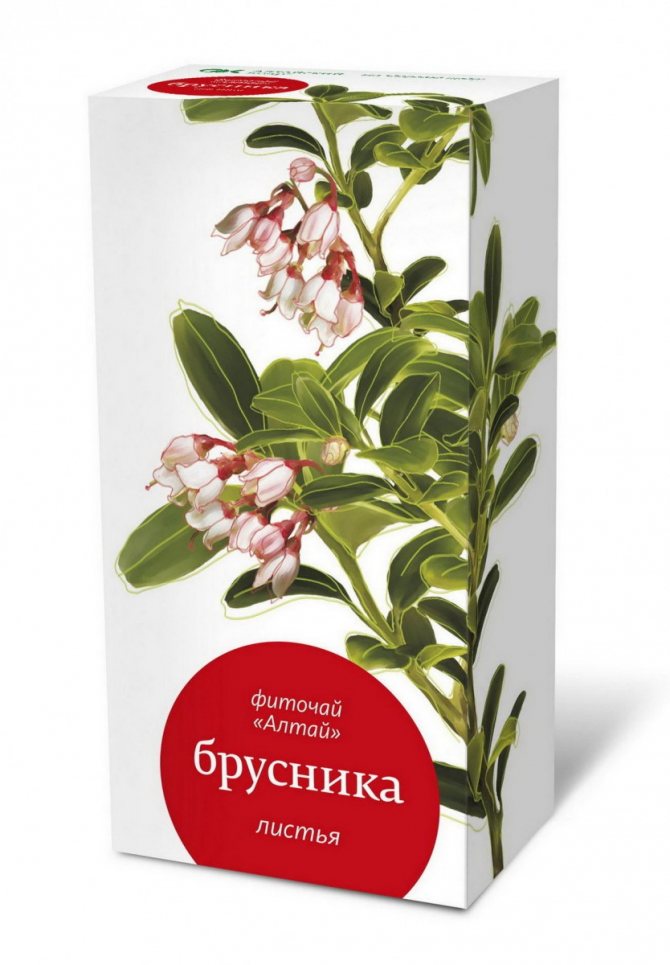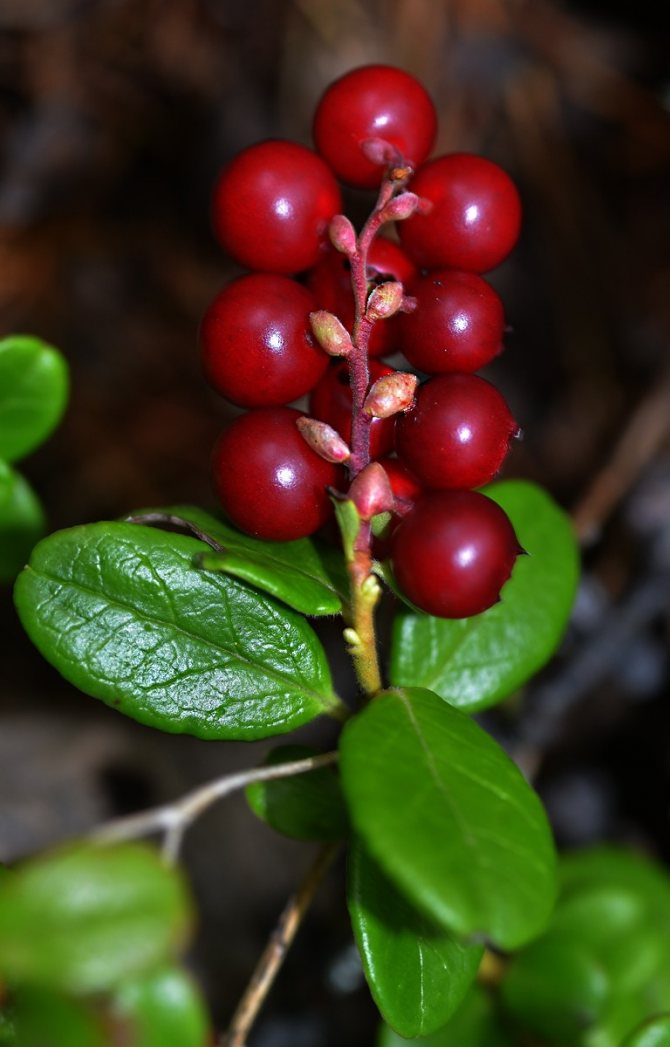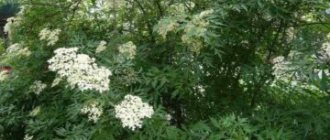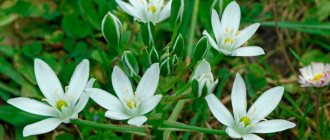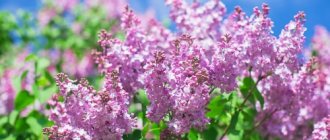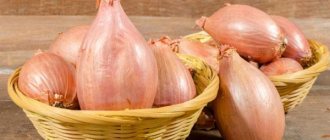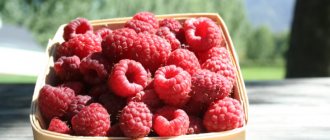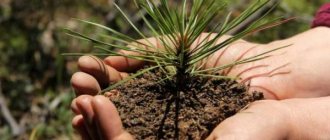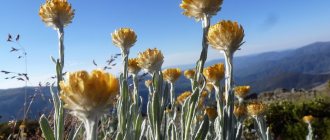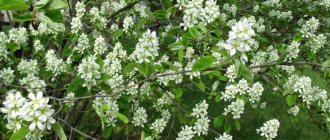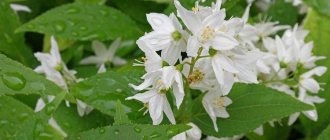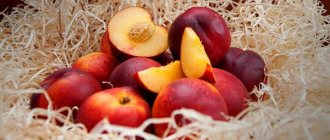Lingonberry is a versatile fruitful berry with a number of beneficial properties. In our country, it has been widely used in different directions since time immemorial. But the selection and cultivation of lingonberries in the garden is typical only for the second half of the 20th century. And although the berry is quite hardy and unpretentious, you need to take care of it correctly. We decided to talk about the intricacies of breeding and caring for this beautiful plant.
Photo of a bountiful harvest.
Lingonberry variety selection
Lingonberry varieties have been cultivated for different purposes. Some were bred to increase yields, resulting in varieties like Coral and Red Pearl that bear fruit twice a year. Other plants have been adapted for growing in certain climatic conditions, and still others for growing at home in flowerpots.
Bushes of different varieties of lingonberry differ slightly from each other in appearance, as well as in yield and fruit taste. The conditions for caring for them also differ somewhat, which must be taken into account when choosing a variety before planting.
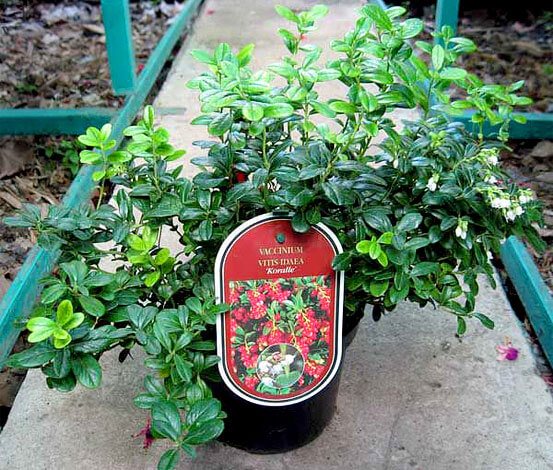
An adult bush of the Coral variety
Here are the features of the most common lingonberry varieties:
- The Sanna variety, bred in Switzerland, is unpretentious and can grow even in the shade of trees and larger bushes. Due to the dense foliage and abundant harvest, it is grown both for industrial and decorative purposes. About 300 grams of berries are harvested from one bush, which have a pronounced sweet and sour taste with a light lemon flavor;
- The Erntesegen variety differs in the height of the bushes up to 40-50 cm. The leaves and berries of the plant are also large, the diameter of the latter reaches 10 mm or more. At the same time, the amount of harvest from one bush does not exceed 200 grams. This variety is used mainly in landscape design;
- Coral was cultivated in Holland. The height of the bushes is 30 cm, and the weight of one berry is approximately 0.3 grams. The yield from one bush is 100-120 grams. This is not enough, but the bushes of this variety bear fruit twice a year;
- The Red Candy variety has large berries, with a diameter of 7 to 11 mm, while the height of the bush does not exceed the standard. The fruits ripen in mid-September, and their weight on one bush reaches 300 grams;
- Red Berry produces even larger fruits, usually 12 mm in diameter. The number of fruits harvested from one bush reaches 250-280 grams;
- The Rubin variety has a high yield and late ripening of fruits. The berries are harvested at the end of September, getting more than 320 grams from one bush. Also, this variety has a high frost resistance, making it suitable for growing in regions with cold winters;
- The Runo Belyavskoe variety belongs to early maturing and high-yielding varieties. The fruits ripen in August, and the yield is 350 grams per bush. Also, this variety is distinguished by the decorativeness of the bushes, which have a regular spherical shape;
- The Miss Cherry variety refers to early ripening and undersized. The fruits are harvested at the end of July and August, and the height of the bushes does not exceed 15-20 cm. It also has high frost resistance - it can withstand temperatures down to -46 ° C;
- The Red Pearl variety is large-fruited and bears fruit twice a year - in July and October. The diameter of the berries reaches 12 mm.
Almost all varieties of garden lingonberry can be grown in flowerpots at home. At the same time, for these purposes, low bushes are often chosen, for example, the varieties Miss Cherry, Rubin, Kostromichka and others.
In the photo below - Miss Cherry saplings:
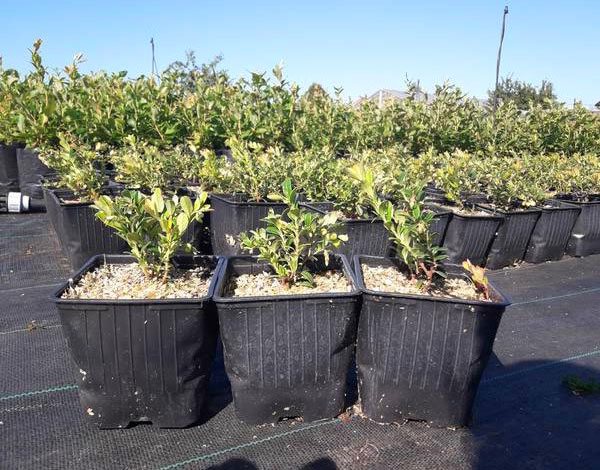

On a note
Varietal lingonberry bears fruit twice as abundant as wild one. With proper agricultural technology, the yield can be 3-5 t / ha. In some regions, they do business on the cultivation of lingonberries, since it pays off in the second or third year. Sometimes rural residents collect lingonberries, as well as cranberries, blueberries, blueberries and other wild berries for delivery to large enterprises, but this brings much less income than selling the goods on their own.
Harm to the body and contraindications
Lingonberry, the berries of which have beneficial properties and contraindications, are not used in the following cases:
- with gastritis with high acidity, stomach ulcer;
- with cholecystitis;
- if there is a history of hypotension;
- with urolithiasis.
Due to the diuretic properties of the fruits, they lead to the movement of stones in the kidneys and gall bladder, which will exacerbate the pain and end up with complications in the body. When the gastrointestinal mucosa is damaged (ulcers, gastritis), its inflammation occurs, since lingonberry juice contains many organic acids. Fruit drinks and drinks can be consumed at any time, and preparations with lingonberries in the composition only before meals, on an empty stomach. Such a regime is important to bring real benefits to the body.
Lingonberry has the ability to accumulate radioactive substances. Berries should be picked in ecologically clean areas, away from businesses and highways. Sometimes in the swamps, the berry "rings" from the radiation, because rockets are dropped into remote, remote places.
Siberian berries are not as tasty as cherries, apricots, or strawberries. Not everyone likes its tart taste. But the prepared desserts perfectly quench thirst, saturate the body with vitamins and give Siberian health and energy, which are so necessary in our difficult ecological environment, which is combined with the fast pace of life.
Plant propagation methods
In the wild, lingonberry propagates mainly by seeds, while cuttings and cuttings are most often used for breeding garden varieties, and seeds are planted quite rarely. Seeds can be obtained from the most ripe or overripe fruits. To do this, after harvesting, they are left to be stored for 3-4 months at a temperature of about 4-5 ° C. After that, the berries are cut and seeds are extracted from them.
To propagate lingonberries by cuttings, green or woody shoots are cut from the bushes. They have no roots and are placed in a special substrate for germination. After rooting, the cuttings can be transplanted together with the soil in which they have taken root.
For example, the photo below shows rooted cuttings:
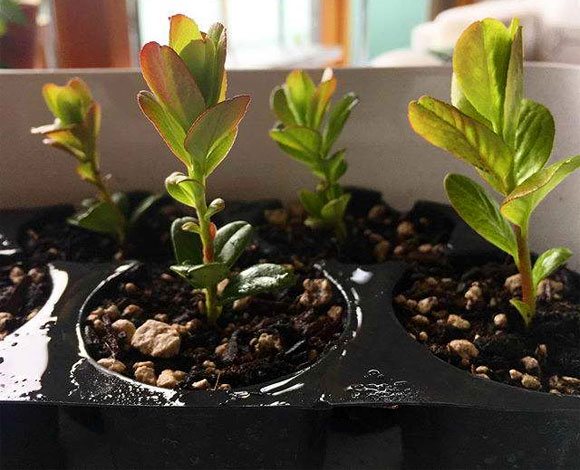

Delenches differ from cuttings in that they are separated from the plant along with the root part. Lingonberry is characterized by the germination of underground shoots, due to which you can cut off many parcels from an adult bush and plant them.
Plants more than 5-7 years old are used to obtain the cuttings. The bush is carefully dug in order to extract an underground shoot. After that, the seedling is separated and a part of the rhizome is carefully cut off with a secateurs.
It is possible to breed lingonberries in the country without buying special seeds or seedlings, but by cutting off cuttings or cuttings from forest bushes growing in the wild.
It is also useful to read: The use of lingonberries during pregnancy
Lingonberry cuttings take root and take root in about 70% of cases, while cuttings grow successfully after transplanting in more than 90%. Seed germination when planted in open ground also reaches 70%, and at home does not exceed 50%.
Also, depending on the breeding method of lingonberries, the time of appearance of the first harvest depends.When using seeds, the bushes bear fruit for 4-5 years, and when using seedlings, berries can be obtained already for 2-3 years.
The video below details the breeding methods for lingonberries:
On a note
Lingonberry seeds and seedlings can be purchased at garden stores or ordered by mail. Many nurseries offer this service to residents of remote areas. Depending on the variety and age of the seedlings, their prices may differ. Some are sold for about 400 rubles per seedling, while others can cost up to 2,000 rubles.
What are lingonberries useful for?
Useful properties are possessed not only by berries, but also by the leaves of the shrub, the composition of which is no less rich. The leaves are harvested during the flowering period, when they are saturated with components important for the body. Berries - during their full ripening.
The benefits of lingonberry for the body are invaluable. It is an excellent antiseptic, antioxidant, immunostimulant. The use of fruit drinks, syrups, compotes and other drinks with lingonberry berries in the composition maintains the body in good shape, giving vigor and strength.
For women
How lingonberry is useful for a woman is well known to those whose menstrual cycle is extremely painful. Red berries will relieve pain during critical days. Drinks in the form of decoctions and infusions help to treat inflammation of the genitourinary system.
In cosmetology, masks made from lingonberry leaves are in demand and are useful for hair loss, dandruff, and skin inflammation. Masks prepared on the basis of fruits have moisturizing and tightening properties, helping to fight the first wrinkles due to the unique composition. They are useful at a young and mature age. The parallel intake of drinks will keep the body in good shape.
Lingonberry extract, due to its antioxidant activity, delays the aging process and reduces the harmful effects of the environment on the epidermis, strengthening its walls. The enzyme arbutin in the leaves has the ability to relieve age-related hyperpigmentation on the skin.
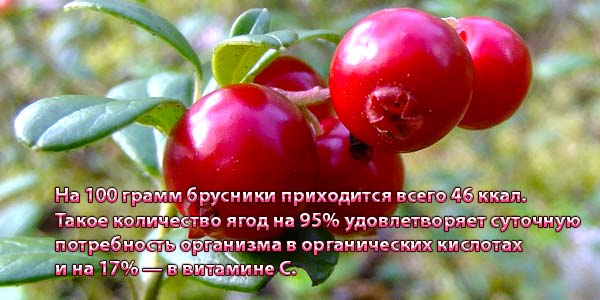

Is it possible for lingonberries during pregnancy and breastfeeding
The berry is useful in the diet of pregnant women. It has properties:
- Saturate with vitamins that the body needs when it does double duty. For example, vitamin C supports immunity and reduces the likelihood of inflammation, and B vitamins maintain a stable emotional background.
- A useful lingonberry leaf, which is taken in the form of infusions, will help to increase the level of hemoglobin and relieve swelling in the last months of gestation.
- During lactation, lingonberry drinks keep the breasts healthy, reducing the risk of mastopathy, lactostasis and other diseases.
The main beneficial properties of berries during pregnancy are the ability to relieve intoxication, fight hypertension, neuroses, immunodeficiency, anemia and replenish the lack of trace elements in the body.
Blooming lingonberry twigs help maintain pregnancy, and jam is useful after childbirth. The berry is hypoallergenic, its composition is harmless to the body of the mother and the child. Contraindicated only for gastritis with high acidity, low blood pressure, urate stones and in the first trimester of pregnancy.
For men
Lingonberry has the ability to relieve inflammation of the urogenital area, saving the body of men from pathologies in this area. Due to the high content of procyanidins, lingonberries are successfully used in the prevention and treatment of cancers (colon cancer, leukemia). Honey jam is useful as a prophylactic agent against prostatitis, which often develops in the body with age.
The composition of the red berry will protect men from inflammation and pain in osteochondrosis, arthritis, gout. Due to the presence of quercetin in lingonberries, analgesic properties are expressed.In case of skin problems (eczema, psoriasis), fruit gruel is applied to the damaged areas of the dermis. For scabies and lichen, freshly squeezed juice in the form of compresses is useful.
To maintain oral hygiene and prevent paradanthosis after brushing teeth, it is useful for men to rinse the mouth with lingonberry infusion. The drink contains tannins, which have antimicrobial properties.
For kids
Pediatricians argue at what age lingonberry berries are useful for a child's body. The prevailing opinion is that lingonberries are introduced into the children's diet from a year, starting with one berry and gradually increasing the dose. Fruit drink or berry puree is useful, which the baby really likes (drinks are not used in concentrated form). The grown toddler is offered lingonberries in sugar syrup. Since preservation processes take place due to the properties of benzoic acid, the berries are perfectly stored in the refrigerator. They are placed in jars, filled with sugar syrup without sterilization.
What conditions are suitable for growing berries
In the wild, lingonberry grows close to swamps and in the forest, where the soil is moist enough and has a high acidity. It bears fruit best in sunny areas. Lingonberries can grow in partial shade and even in completely shaded areas, but in these cases it will give a much lower yield.
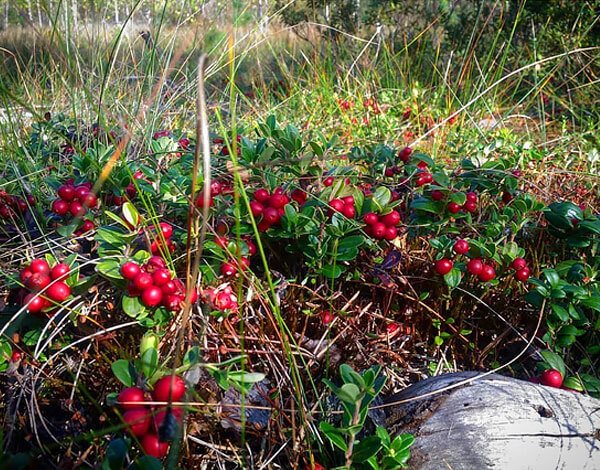

A well-lit shrub during the ripening period of the crop.
In relation to the soil, lingonberry is not very whimsical. Only clay and loamy soil is not suitable for her, as well as too dry or swampy land - groundwater should pass no higher than 60 cm from the surface. At the same time, lingonberry grows best on peat or light sandy loam soil with an acidity of 3 to 5 pH. In cases where the land in the garden where it is planned to plant shrubs is not very suitable for this, the soil is specially prepared before planting.
In summer cottages, lingonberries are usually planted in beds up to 1.5 meters wide. Two rows of lingonberry bushes can grow on one bed, at a distance of 40 cm from each other. Bushes located in the same row should be at a distance of 25 cm. Places for beds should be chosen on a flat, sunny area so that there are no hills or depressions nearby. It is important that moisture does not stagnate in the beds.
If the soil does not match during the formation of the beds, the top layer of the soil is removed, creating a depression of 20-25 cm. Then it is covered with high-moor peat or a self-prepared soil mixture. It can be made by mixing in peat with sand, fallen needles and sawdust. The last two components will help maintain the required acidity level. The ratio of peat and sand should be 5: 2. It is not necessary to add humus or other fertilizers to the soil.
The soil mixture must be mixed well and sprinkled with sulfur at the rate of 50 grams per 1 m2, and then put on the garden bed. It is not necessary to tamp the ground strongly, since lingonberry bushes grow better on loose soil.
After the bed is formed, it must be watered with acidified water. You can use citric acid for this, the amount of which is 5 grams per 3 liters of water. You can also make a vinegar solution by adding 1 cup to 10 liters of water. After preparation, you can plant the planting material.
The picture below shows a diagram of a garden bed for growing lingonberries:
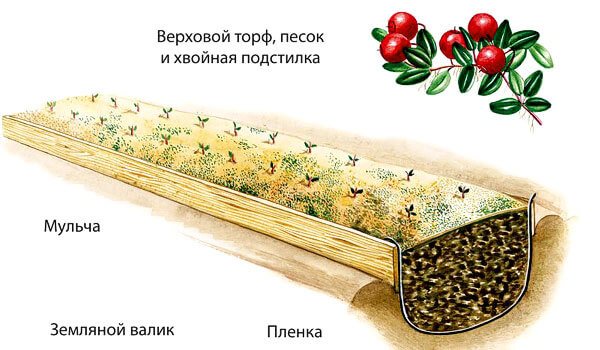

On a note
The varieties Rubin, Kostromskaya rozovaya and Kostromichka were cultivated in Russia, therefore they are most suitable for cultivation in the Moscow region and the entire central zone of Russia, as well as in the northern regions, including in the Khanty-Mansiysk Autonomous Okrug and even in Siberia. These varieties can withstand very low temperatures in winter. Other varieties of lingonberry were developed in Europe and America (USA) and adapted to the local climate.
Gardeners reviews
Anna 12
Just take into account that lingonberries need full sun. If it falls into the partial shade of thuja, then there will be no harvest.
ANI
I planted lingonberries according to all the rules: I filled the planting hole with peat, after planting I mulched it with a thick layer of pine needles. And in the process of growth, I regularly mulch with pine litter, but the sand absorbs everything.
How to plant seedlings in open ground
It is possible to plant lingonberries in open ground in the spring, starting in April, when the weather is stable, and also in the fall before the first frosts appear. Moreover, in spring, young plants are most often covered with non-woven materials to protect them from possible frost.
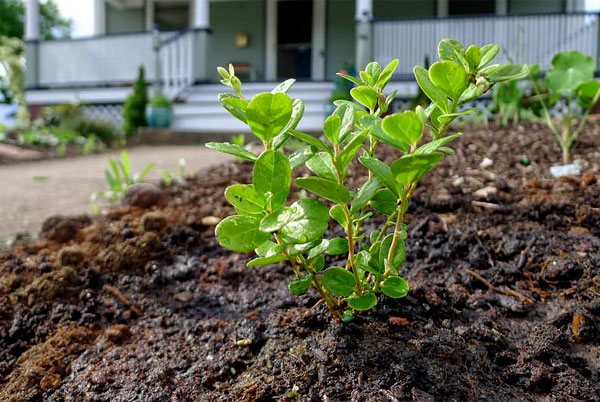

It is advisable to plant lingonberries after the average daily temperature is stable above + 5 ° С
It is best to use seedlings 2-3 years old for planting. They almost always take root and begin to bear fruit faster. Saplings are planted in the beds along with the soil in which they grew. For this, as a rule, depressions of 12-15 cm are made in the ground. Seedlings, carefully removed from a pot or box, are lowered into them. Then the earth is slightly tamped, filling the top layer of soil in which the bush grew, with soil from the garden. Small lingonberry cuttings are planted in the same way, but they are buried in the soil only 2-4 cm.
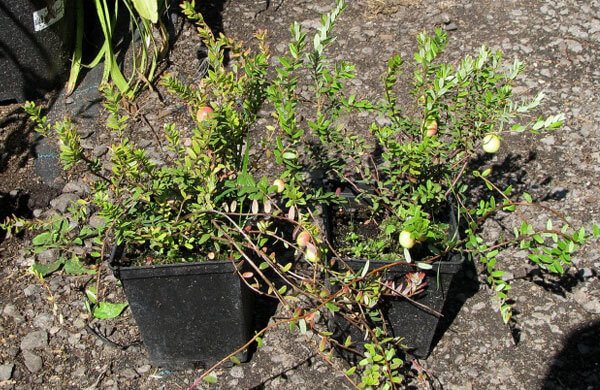

When planting from pots, the bushes are transferred directly with a clod of earth.
When planting seedlings, it is necessary to leave a sufficient distance between them. The bushes should be 25 cm apart as they will grow. In addition, after a few years, as a result of natural division, young bushes may appear nearby.
After planting lingonberries, it is imperative to mulch the soil. You can use softwood sawdust, straw or small gravel for this. They are laid out on top of the ground in a layer of 2 to 5 cm. Mulch helps to retain the necessary moisture, and sawdust and needles help acidify the soil.
According to gardeners, the first 10 days, lingonberries need to be watered every day, and then as needed. For irrigation, it is advisable to use rainwater or settled for 1-2 days. For example, here is a video feedback about the autumn planting of lingonberries:
How to propagate a bush
There are several breeding options for lingonberries, each with its own pros and cons. Maternal characteristics are retained regardless of the selected method.
Growing from seeds
Using seeds to propagate lingonberries is a rather unpopular way, since you will have to wait several years before the first fruiting. Another disadvantage of the technology for growing bushes from seeds at home is that stratification of planting material will be needed, otherwise the sprouts will not appear.
It is recommended to send seeds to the ground in the fall. If planting is carried out in the spring, it is imperative to withstand the planting material outdoors during the winter months. When germinating seeds at home, it is recommended to put the container on a light windowsill, without light the sprouts will not appear.
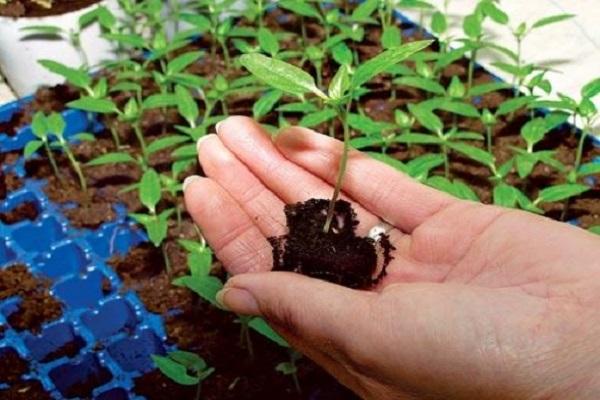

Green and root cuttings
Cutting is a simple and effective way to propagate lingonberries. Both green and lignified shoots take root perfectly. It is recommended to start an exciting process both in spring and in autumn - the cuttings quickly sprout. The only condition is to build a temporary greenhouse from the film, which will protect the shoots and create the necessary microclimate.
There are no special care requirements, the main condition is to regularly moisten the soil, especially if the cuttings are planted in spring. Loosen the soil carefully so as not to damage the fragile roots.
By dividing the bush
Dividing lingonberry bushes is another way to increase the number of plants. It is recommended to do the process in the spring, before growth begins. Residents of warm regions can start dividing even in autumn, before the frost the bushes will have time to take root.
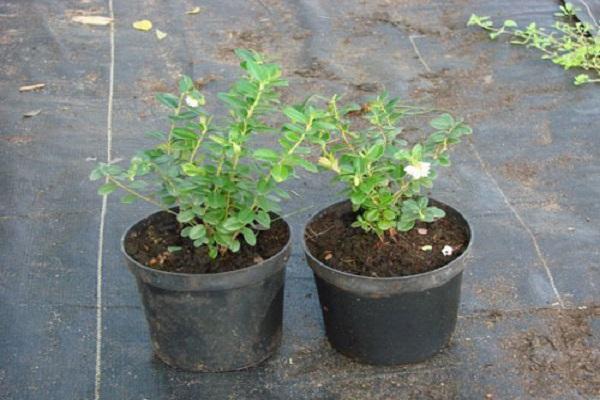

How to grow lingonberries from seeds
Sowing lingonberry seeds can be done in late autumn or early spring. In the second case, they need to be stratified in advance. To do this, put a little sand in a small container, moisten it and fold the seeds inside.
It is also useful to read: Lingonberry leaves and their use in medicine
Stratification can be done in another way. The seeds can be folded into a wet cloth and wrapped in a plastic bag. In both cases, the seeds must be left in such conditions for 3-4 months at a temperature of about 4 ° C. They can be put in the refrigerator, left on the balcony or in the cellar. At the same time, it is necessary to periodically check that the seeds are moist and, if necessary, moisten them additionally.
Stratification is carried out to increase seed germination and accelerate germination.
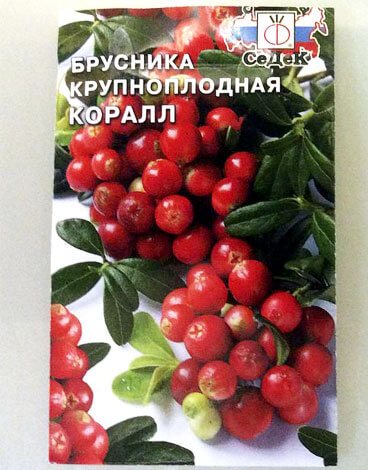

It is advisable to buy seeds from trusted suppliers who guarantee their quality and germination.
You need to plant seeds in flowerpots or containers with pre-prepared soil. The height of the soil should be 5-7 cm, but you do not need to bury the seeds in it. They are laid out on the surface itself, slightly pressed into the ground, at a distance of 2 cm from each other.
The flowerpots should stand in a well-lit place at room temperature (20 ° C). It is desirable that the sun's rays fall on them. Seeds sprout about 10-12 days, but some may "hatch" after 20, or even 30 days. Water the seedlings as needed, regularly checking that the soil is moist enough.
In containers, seedlings are grown until they have 4-5 leaves, after which they can be transplanted. For the first two years, it is advisable to grow them in greenhouse conditions, protecting them from spring frosts and severe winter frosts. It is necessary to take care of young seedlings, as well as for ordinary bushes.
A description of the correct scheme for breeding seedlings and transplanting it into open ground is shown in the video:
Lingonberry is a guarantee of excellent health
For the health of lingonberries, growing, planting, caring for which is only a pleasure - this is just a godsend! Everything is useful in this pretty little plant: bright red berries (accumulating a huge amount of useful trace elements and vitamins), as well as shoots and leaves, which are an excellent basis for a useful medicinal decoction.
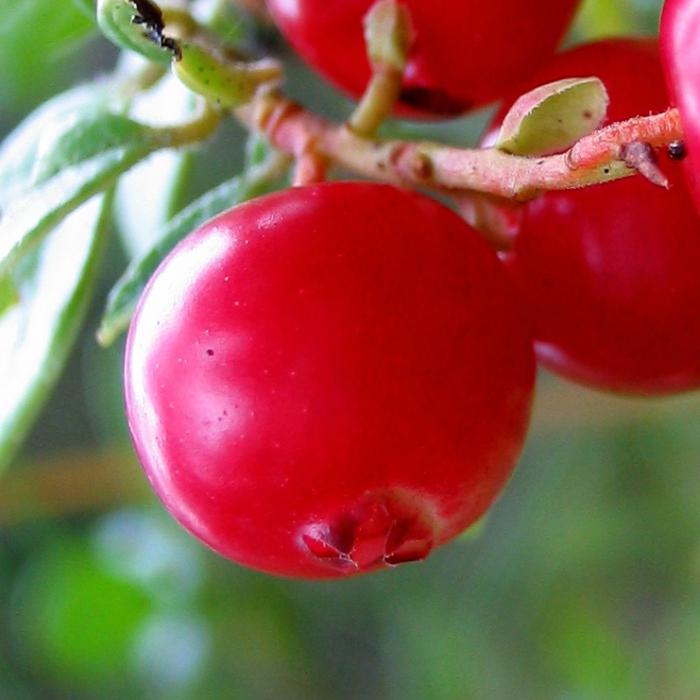

Lingonberry leaves have a powerful antiseptic, wound healing, diuretic, antimicrobial, anti-inflammatory and tonic effect. It is an excellent remedy for the treatment of viral diseases. Decoctions and infusions are recommended to be used for rinsing the throat and mouth, which is very effective in the treatment of many infections, especially staphylococcal infections. It is also an excellent remedy for lowering blood sugar levels, which is very beneficial for people with diabetes. It is a valuable source of protein for dieters.
Features of caring for bushes
The rules for caring for lingonberries need to be studied even before planting bushes. They give a good harvest only on suitable soil and in the absence of shade. Proper watering is also very important. Lingonberry roots are located in the surface layers of the soil, therefore, if there is insufficient moisture, they dry out quickly. Moreover, if water stagnates in the ground, oxygen ceases to flow to the roots, as a result of which the bushes also gradually disappear.
Watering lingonberries should be 1 to 3 times a week, depending on the climate and air temperature. In hot months, the bushes are watered more often. The amount of water must be calculated from the ratio of 10 liters per 1 m2. The best ways to moisten the soil in garden conditions is sprinkling or small-drop irrigation. They should be carried out in the morning or evening hours, after the heat has subsided.
Lingonberry beds must be weed regularly. You also need to often carefully loosen the top layer of the earth, trying not to hurt the roots of the plant.A prerequisite is soil mulching, which is carried out every couple of years.
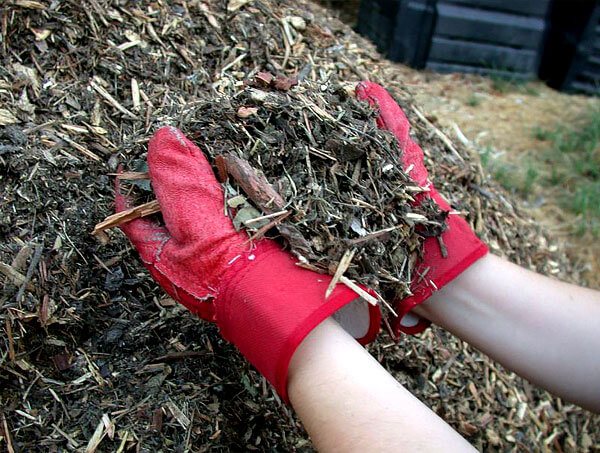

Optimal mulch is obtained from twigs shredded in a garden shredder
Fertilizing plantings is possible only after the start of fruiting bushes. It should be borne in mind that lingonberries do not need a lot of fertilizers, and if unsuitable substances are used, they may die. In particular, manure or bird droppings cannot be used for feeding, since they contain many substances that are harmful to the root system of this plant. You can fertilize lingonberries with mineral fertilizers. You need to choose them depending on the soil on which the bushes grow, as well as their varieties.
Lingonberry is a perennial plant and can successfully grow on a personal plot without replanting for more than 20 years. In this case, the bushes must be periodically rejuvenated. About once every 7-10 years, you need to cut off most of the old shoots, reducing the height of the plant by almost half. You need to prune at the very beginning of spring.
On a note
Lingonberry is a frost-resistant plant, so you do not need to wrap it up for the winter. Due to the low height of the shrubs, it winters calmly under a layer of snow. Depending on the variety, lingonberry can withstand temperatures from -10 to -45 ° C. At the same time, during spring frosts, flower buds are damaged when the temperature drops to -4 ° C, as a result of which the crop may be lost. To prevent this, if necessary, the bushes can be covered with special materials in the spring.
Culture specifications
Before embarking on a fascinating process, it is recommended to study the characteristics of the berry culture, this will allow you to avoid shortcomings already at the first stages of cultivation. It will also be useful to find out the description of the plant, the basic requirements.
Lingonberry is a low shrub that rarely exceeds 45 cm. The plant is evergreen, it does not shed its leaves even for the winter. Flowering occurs in mid or late spring. The first fruits ripen in August, but in cool regions, the bushes are endowed with red small berries even in October.
Frost and drought resistance
The peculiarity of lingonberries is that the bushes do not die even in severe frosts (up to 30 degrees). Thanks to this, the culture is grown in cold regions, shelter is required only for young plants.
Garden lingonberry is a moisture-loving plant, so it tolerates drought rather poorly. You will have to take care of the mulch layer or regularly water it.
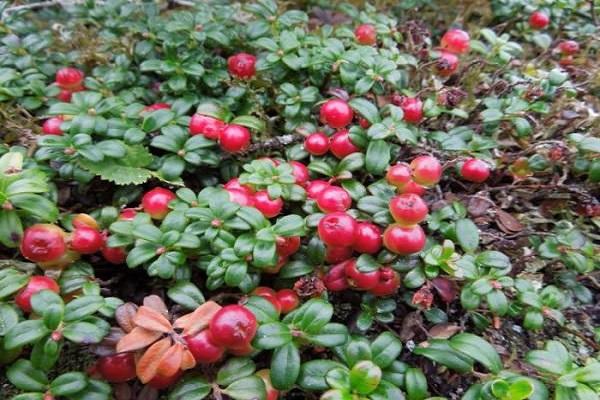

Disease resistance
Diseases on garden lingonberries are extremely rare, but frequent showers or unstable weather conditions can lead to moniliosis or exobasidiosis. It will be possible to prevent diseases in one way - by regular preventive treatments of the bushes.
How fast the bush grows
Lingonberry grows rather quickly, although after growing to the required height, it sharply inhibits development. It is recommended to carry out pruning, which will turn the plant into a lush, compact bush. Once every few years, you need to cut the plant completely, this helps to rejuvenate lingonberries and increase yields.
What year does it bloom and bear fruit
Flowers on the bushes appear as early as 1-2 years after planting the bushes. Fruiting will not be abundant. The peak yield occurs between the 3rd and 6th year after planting. If you carry out cardinal pruning, fruiting will not decrease for several decades.
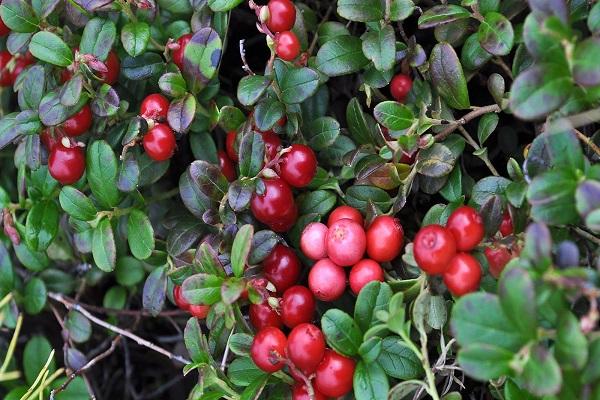

Where are the fruits of lingonberry bushes used?
Lingonberry fruits are universal - used for conservation, baking, desserts. In alternative medicine, berries are very popular, thanks to their unique composition, homemade medicines are recommended for use against many diseases.
Often the berries are frozen or dried, the beneficial qualities do not disappear.
How to protect lingonberries from pests and diseases
Lingonberries rarely get sick and are attacked by pests. Only scale insects, aphids, leafworms and several other more rare species of insects can be dangerous for it. Some of them can damage leaves, buds and shoots, which affects the yield of the bushes. For pest control, insecticides are used that are designed to destroy a specific type of insect.
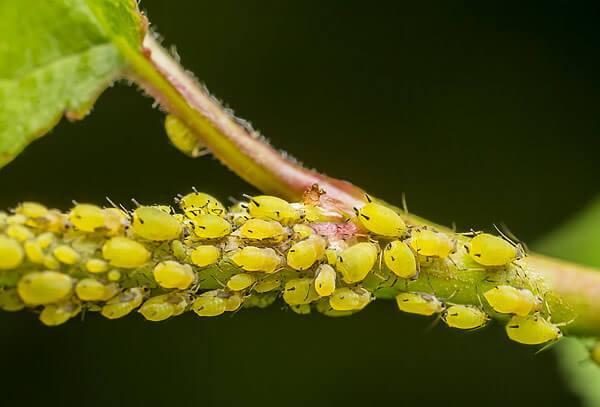

Aphids, during mass reproduction, can destroy individual bushes.
Also, moles and voles can cause harm to the plant, which damage the roots and break holes in the planting area.
As for diseases, lingonberries are susceptible to the mycoplasmosis virus, which causes plant dwarfism, and fungal infections. The latter can be recognized by the appearance of spots on the leaves, as well as a change in the shape of shoots and leaves and their atypical growth. In some cases, the plants are destroyed, while in others they are sprayed with Bordeaux liquid. It can also be used for preventive purposes.
Chemical composition and calorie content of lingonberry
The beneficial properties of lingonberry for the body are associated with its chemical composition. Lingonberry is rich in vitamins. The berry contains 86% water, but the rest of the composition is amazing:
- weight vitamin set from group B, A, C, PP, E;
- a mineral complex with iron, manganese and a number of trace elements in the composition;
- an abundance of organic acids useful for the body, from common to rare;
- the presence of flavonoids that stop damage to the walls of blood vessels;
- lycopene with characteristic antioxidant activity;
- glycoside vaccinin - an excellent aniseptic that relieves inflammation;
- Zeaxanthin, which maintains vigilance;
- tanning compounds capable of binding heavy metals and removing them from the body;
- 10-15% are glucose, fructose, sucrose - one of the energy sources;
- the composition contains starch and dietary fiber that are useful for the digestive tract.
Growing lingonberries at home
For growing lingonberries in an apartment, decorative varieties of short stature are most often chosen. The conditions for caring for them differ little from those when growing bushes in the open field.
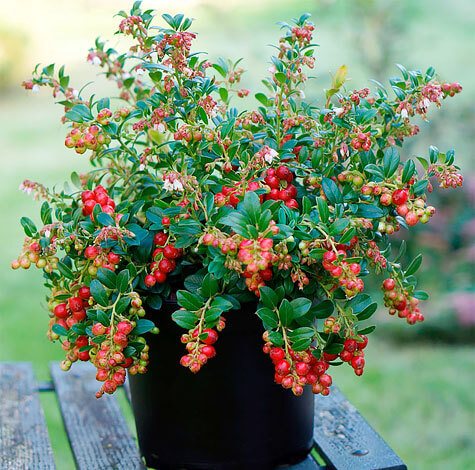

Lingonberries in a room can bear fruit very abundantly.
You can grow lingonberries at home from seeds or purchased seedlings. Bushes can grow in small flowerpots or common containers at a distance of 10-20 cm from each other. It is advisable to choose a flowerpot for one bush with a diameter of about 20-25 cm. They should be placed in illuminated places, for example, on a windowsill.
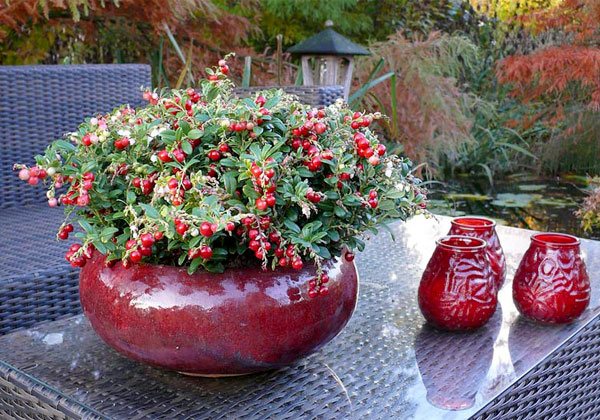

In the original flowerpots, strawberries are also very decorative.
The soil for growing lingonberries can be prepared independently, as described above, or you can use an ordinary soil mixture for indoor plants with an acidity of 3-5 pH. It is imperative to put drainage at the bottom of the flowerpot to prevent waterlogging of the soil. Water the plant 1-2 times a week with settled water. It is important to ensure that the soil does not dry out, but it is not too wet.
You can fertilize the plant a little bit no more than once a year. Special mineral mixtures are selected for this.
Indoor varieties of lingonberries begin to bear fruit at 2-5 years of age.
Useful video: personal experience of growing lingonberries in the country
Water and feed regularly
| Watering
|
| Mulching
|
| Top dressing
|
Site selection and soil preparation for planting
Lingonberries need well-lit areas.If you plant it in the shade, the yield and quality of the fruit will be significantly lower, so it is not recommended to plant shrubs under trees. The site should be open and well ventilated, but at the same time protected from drafts and northerly winds.
When choosing a place for planting, you should inquire about the level of occurrence of groundwater. Berry bushes grow poorly and often get sick if they come closer than 40-60 cm to the ground. If the groundwater is higher, then good drainage should be organized to remove excess moisture and high beds.
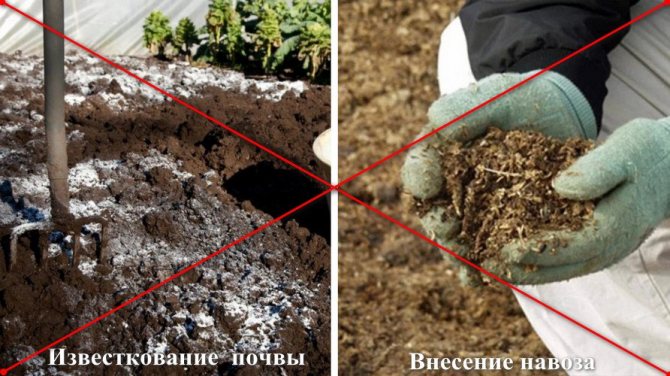

It is not worth adding lime and manure to the soil on the site, since the soil fungus that braids the roots of the lingonberry reacts poorly to them.
Lingonberry does not impose special requirements on the composition of the soil, however, it gives the best yields when planted in light, loose, acidic soils that conduct water and air well. It is best to plant it in peat bogs, sandy loam. Heavy, clayey, loamy soils are unsuitable for growing lingonberries. Site preparation must be done in the fall or 2-3 weeks before planting.
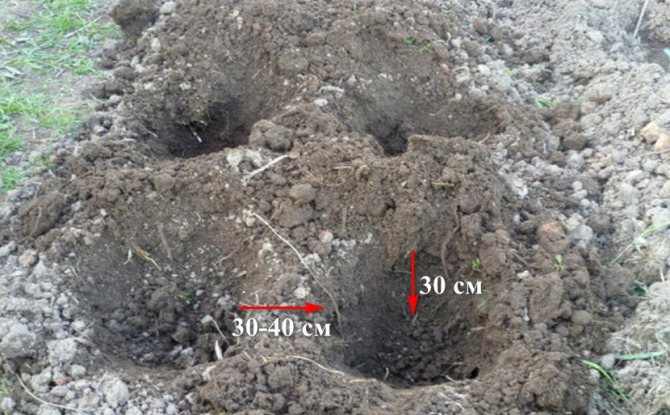

For seedlings, you will need to dig a planting hole 30 cm deep (about the size of a shovel bayonet). It is necessary to leave 25-30 cm between the plants, 30-40 cm between the rows.
The earth dug out of the hole should be mixed with peat, sawdust, pine needles, sand. Recommended soil mixtures for the hole:
- high-moor peat + coarse river sand in a ratio of 3 to 1;
- high-moor peat + large river sand + sawdust + needles in a ratio of 2: 1: 1: 1.
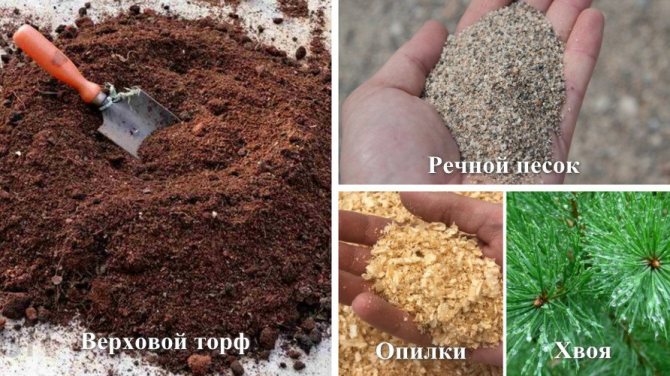

If the soil is too poor, then it should be fed with rotted compost (2 buckets / m²), sour peat crumb (5 buckets), nitrophosphate (2 tablespoons), superphosphate (2 tablespoons). Some gardeners recommend pouring it with a solution of citric acid (100 g / 3 L of water), apple cider vinegar (200 ml / 10 L of water). These funds will require 10 liters per 1 m². Sulfur (10-15 g / m²) can also be added to acidify the soil. After fertilization, the soil should be well leveled.
Is it possible to grow lingonberries in the garden
It was a significant increase in yield when trying to grow garden lingonberry in culture that forced breeders to come to grips with breeding its garden forms.
Back in the middle of the last century, Swedish, German, Dutch and American breeders were engaged in this process almost simultaneously. At the moment, there are already more than 20 varieties of lingonberry garden, which differ not only in significant yield indicators, but also in the larger size of berries and the height of cultivated bushes.
At the same time, the requirements for planting and caring for wild and garden lingonberries are almost identical.
- Lingonberry can grow and bear fruit well only on acidic and well-drained soils with a minimum organic content.
- The moisture conditions in the root zone should correspond to the "golden mean". If it gets too dry, especially at high temperatures, the lingonberry bushes will die. On the other hand, with constant waterlogging of the soil, they will also die, primarily from a lack of oxygen exchange in the soil.
- Garden lingonberry is quite easy to adapt to any air temperature. But in extreme heat conditions, she will need more abundant and regular watering, and the berries may still become smaller.
- Neither garden nor wild lingonberry is afraid of frost, tolerates up to -40 ° C in winter. The only thing is that its flowers can suffer from frosts in late spring or early autumn (they cannot stand temperatures below -4 ° C).
- Lingonberries love good lighting, and in partial shade conditions, the yield will decrease, and the berries will become smaller.
- In no case should you overfeed the lingonberry bushes - in natural conditions they grow on very poor soil.
Lingonberry leaf: indications
The dry substance is easy to obtain in every pharmacy. The most convenient form is filter bags. Below is a list of what leaflets help from:
- dysfunction of the genitourinary system (pyelonephritis, cystitis);
- joint problems;
- defeat by fungi, viruses;
- infestation by parasites;
- intoxication;
- cold;
- diabetes;
- gastritis, upset stool, digestive process;
- violations of the outflow of bile;
- gynecological dysfunctions;
- swelling;
- hypertension;
- diseases of the airways.
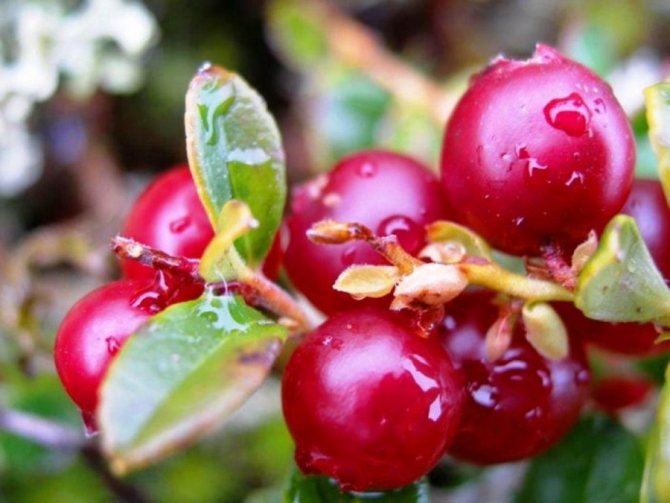

The list can be continued for a long time. However, before therapy, in the presence of serious ailments, you need to consult a doctor. He will tell you in detail when to drink the prepared remedies.
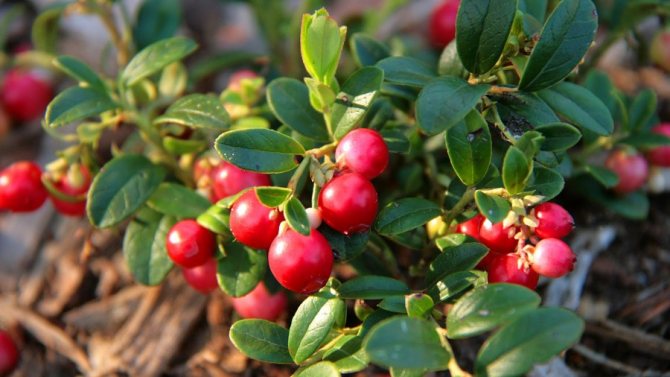

Especially concerns women "in position", people with chronic illness, cancer patients.
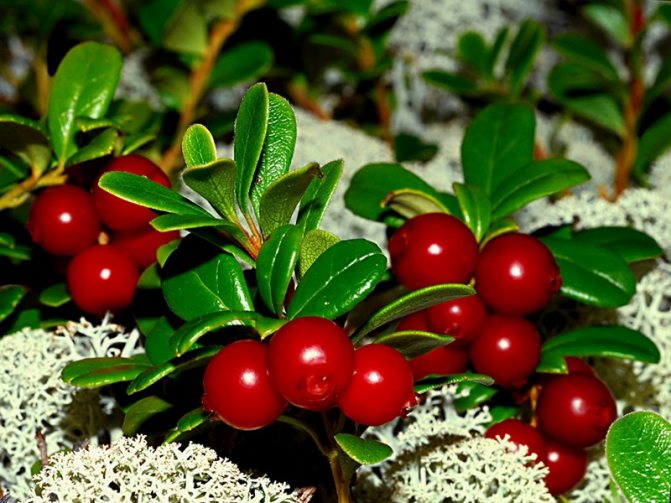

Photo of lingonberry leaves
Preparation of medicinal raw materials
For the subsequent preparation of the medicinal broth, the collection of medicinal raw materials (leaves) is carried out in the spring before flowering. Collect the overwintered ones, since the young leaves will turn black after drying. Secondary collection can be carried out in the fall at the end of fruiting.
Gently pluck the leaves from the stems so as not to injure the plant. Re-collection is possible 5 years after the complete restoration of the bush.
Sort the blackened leaves before drying. Spread quality leaves on a cloth or newspaper, dry in a warm, shaded place with good ventilation.
Brief description of lingonberry
Lingonberry was widely used by distant ancestors. It is not for nothing that its name comes from the Old Slavic word "lumber", which means red and hints at the bright colors of its berries.
Lingonberry is an evergreen shrub, reaching a height of no more than 30 cm. Evergreen dark shiny oval leaves up to 2-3 cm long are its main decoration in the cold season. Below on the leaves, you can see resinous glands in the form of black dots. In late spring, at the ends of last year's stems, small bell-shaped flowers of a pale pink hue appear. They are not strong, but they smell good.
Lingonberry roots, rhizomes and underground shoots are located underground, with the help of which plants can conquer additional living spaces. The system of rhizome and underground shoots is located in the upper layer of the earth, no deeper than 15-20 cm.
Seeds are small, reddish-brown, crescent-shaped.
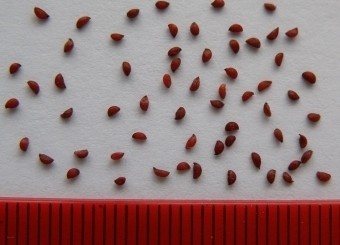

What type of fruit is lingonberry
The fruits of the garden lingonberry are round, shiny red berries. That is, from a botanical point of view, these are multi-seeded fruits, which consist of a fleshy pericarp and a thin upper layer (skin). They can reach 8-10 mm in diameter and about 0.5 g in weight.
Lingonberry has a tart sweet and sour taste, with a slight bitterness. In nature, the fruits ripen from mid-August to late September. They can hibernate under snow and in spring they crumble at the slightest touch.
One berry contains from 5 to 30 seeds.
Lingonberry yield per season
In the wild, the yield of lingonberries is insignificant - only about 100 g of berries can be harvested from one square meter.
Even with the transfer of wild-growing shrubs to cultural conditions, their productivity can increase several times. The first forms of garden lingonberry were already capable of producing 700-800 g of berries per square meter of land. But over time, it turned out that some varieties of lingonberry garden can bear fruit twice per season, and thereby increase the total yield per season up to 2 kg / sq. m.
Observance of the peculiarities of planting and caring for lingonberries, described in the article, will allow you to get from plants even more than 2 kg of berries from 1 sq. m.
The choice of planting material
It is important to choose the right variety for growing, taking into account the climatic conditions in the region. For the middle lane, most varietal specimens of domestic selection are suitable. From foreign varieties, Sanna, Ida, Red Ammerland, Linnea, Susi, etc. grow in such a climate.For those who wish to feast on delicious fruits for a long time, it is recommended to take a closer look at the remontant lingonberry, which bears fruit 2 times per season.
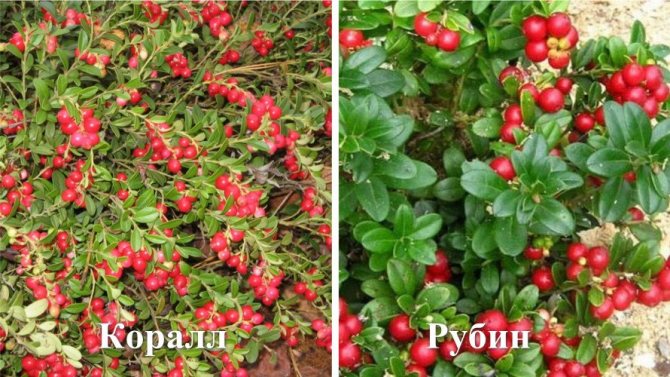

Among the best remontant varieties are Coral and Rubin.
Lingonberry seedlings are sold in containers and with an open rhizome. Closed-root planting material can be planted throughout the growing season. Subject to the recommendations for planting and selection of a successful site, such seedlings quickly take root and grow. They are transplanted to the garden or garden without destroying the earthen coma.
Open seedlings should be planted shortly after purchase. During the purchase, their condition should be assessed: carefully examine the rhizome, trunk, root collar. All organs should look healthy, there should be no stains, growths, or rot on them. The root system must be well developed. Before transportation, to prevent the roots of seedlings from drying out, they must be wrapped in moistened sphagnum moss.
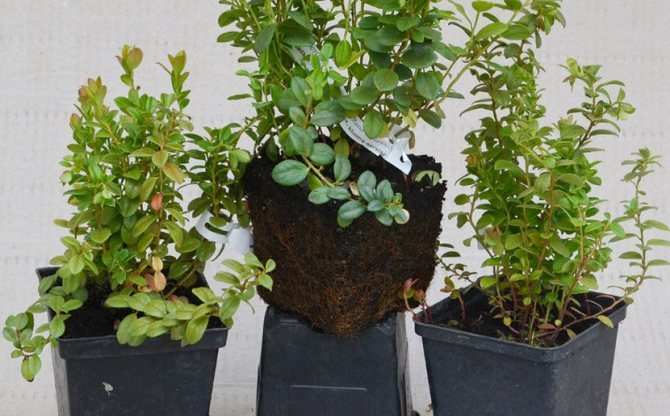

Preparing for winter
Lingonberry, in principle, tolerates winter well. To protect it from too severe frosts, it is recommended to cover the bushes with spunbond for the winter. And this plant is also afraid of frost in early spring, so for the first time, while the weather is not stable yet, it is advisable to cover it at night. In the morning, you need to open it so that the plant receives enough sunlight.
Also read about what a lingonberry plant looks like.
What problems do gardeners face
Problems can arise that reduce plant growth and can lead to death:
- The plant grows weak, the leaves are yellow. This problem can arise as a result of insufficient soil acidity. For acidification, you can water the culture every 2 weeks with water with oxalic acid or vinegar.
- Inflorescences quickly crumble without fruit formation. This problem occurs as a result of insufficient potassium.
- Lingonberries do not have time to ripen before the first frost. In this case, the variety was chosen incorrectly for the gardener's place of residence.
Lingonberry rarely provokes the formation of problems if all recommendations are followed correctly. In rare cases, root rot may occur if the grower excessively moistens the soil. Garden lingonberry has not only attractive decorative qualities, but is also used to prevent a large number of diseases. The berries of the plant contain minerals and vitamins necessary for the human body. The culture is undemanding in care and, with timely fertilization, gives a rich harvest.
Outcomes
For the successful cultivation of lingonberries, you need to pay attention to the following points in the care process:
- Find a suitable place for lingonberries in the garden.
- Prepare the soil in the selected area properly.
- Plant lingonberry seedlings according to the recommendations.
- Water and feed the lingonberry bushes in a timely manner.
- Weed, loosen and mulch.
- Perform annual sanitary pruning in the spring, and every 7 years - rejuvenating.
- Cover the planting of lingonberries for the winter in the northern regions.
- In case of detection of diseases and pests, take timely measures.
Cultivation area
Most often, lingonberries are grown in regions with peat soil that has natural acidity. The more humid northern slopes are suitable for this berry.
The difference in agricultural technology in different climatic zones will be due to the fact that in places with a warmer climate, lingonberries will not be threatened by low temperatures, planting will not require shelter. In places with a more severe climate, shelter is required during the spring and autumn frosts, otherwise part of the harvest may be lost.
Different regions have their own characteristics of lingonberry agricultural technology:
- lingonberry bears fruit well in the Far East. The yield here can be up to 2 tons per hectare per year;
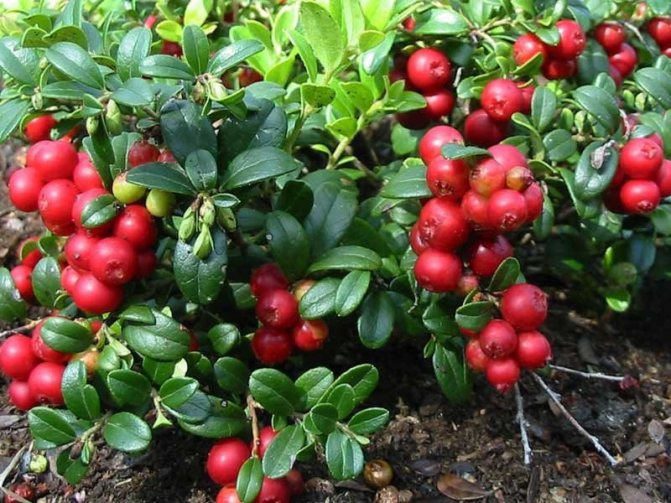

In the Far East, there are excellent conditions for growing lingonberries, and it gives a rich harvest - in the Urals, the wild-growing Kondinskaya lingonberry, collected in the Kondinsky forests, is widely known, but garden lingonberries are practically not grown here;
- in Ukraine, lingonberry is unpopular, perhaps this is due to the high fertility of the soil and the need for frequent watering;
- in Central Russia and the Moscow region, the lingonberry will have enough heat and light to give a crop twice a season.
Photo gallery of views
Landing
- The best time to plant lingonberries is April, but you can also plant in October.
- Seedlings are purchased with a closed root system in a container, before planting they are taken out of the container and shaken off the soil.
- The distance between the seedlings in a straight line is 30 cm, between the rows - 40 cm. The lingonberry grows rapidly, creating a continuous carpet.
- The roots of the seedlings are buried in the holes 7-8 cm, while it is necessary to make sure that the root collar is 2-3 cm below ground level.
- After planting, the seedlings are watered abundantly, and the root zone is mulched with the help of coniferous sawdust, moss or small chips.
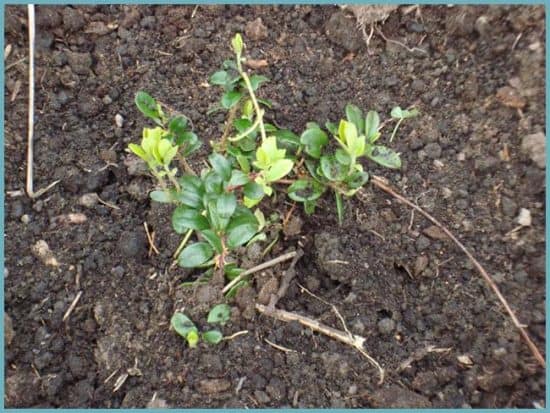

WELL AND FINALLY ABOUT THE HARVEST
In the first year after planting, of course, you will not receive it or it will be scanty, but the next season the harvest will be quite tangible. In August, less often in early September, you can start picking berries. What to do with them further, everyone decides for himself. They are dried, and moistened, and frozen, they make jams and fruit drinks ...
When consumed, you will not gain excess weight, and your immunity will only strengthen, which is very important in our time.
Who would have thought that a low evergreen shrub with hard, glossy oval-shaped leaves and a pronounced midrib, with round red fruits, the diameter of which is from 3 to 12 mm, with a creeping rhizome, that is, lingonberry, could well grow in a summer cottage?
Natural growing conditions of lingonberry
Today we will talk about how to plant lingonberries in the country. The berry will delight the owners with a good harvest from mid-August to the end of September, if conditions are created for it as close as possible to natural ones. In a natural situation, the berry chooses places with acidic soils, lowlands with non-stagnant water and mountainous areas. She does not need rich fertile soils, her element is peat bogs, forests with conifers or a mixed structure, she can often be found on hummocks and banks of bogs.
White and pink bell-shaped buds from 5 mm appear in May, inflorescences form brushes, numbering from 3 to 15 flowers with 8-10 stamens in each. It cannot be said unequivocally that the berries are red: depending on the degree of ripeness, they are colored pink, crimson and burgundy. Reproduction takes place with the help of shoots from the buds on the roots.
Planting a plant: soil composition and special conditions
In nature, lingonberry lives on fairly acidic, well-moisturized soils. Like other heathers (cranberries, blueberries), its roots alone cannot cope with the task of providing the plant with water. But it works well with soil mushrooms, with which lingonberries enter into symbiosis - mutually beneficial cohabitation. Therefore, the best soil for a plant is taken from under natural lingonberries and therefore saturated with mycelium of the required type.
For planting, it is better to purchase bushes with a closed root system. They will take root better, since the roots will not be damaged, and the soil lump is already inhabited by the necessary mushrooms. Planting is carried out in April-May and the seedlings are covered with a film on the frame for a couple of weeks.
The planting scheme is determined not so much by the needs of the plants, which will soon tighten the rows anyway, as by the convenience of the gardener. Row spacings are organized from 30 to 50 cm, the distance between seedlings is from 15 to 30 cm. If the site is located in a raised or transitional swamp, bushes can be placed less often, and more often for quick closing of crowns on decorative flower beds.
Therapeutic action
Phytoncides and phenolic glycoside arbutin, contained in the leaves, promote the excretion of urine and bile, have anti-inflammatory and antimicrobial effects. Leaf preparations strengthen capillaries and cleanse the body of salts and nitrogenous compounds, affect the effectiveness of antibiotics. Berries are a storehouse of vitamins, macro- and microelements. Good diuretic, antipyretic. They have a tonic and restorative effect on the body. Juice from fresh berries improves visual acuity and lowers blood pressure.
Lingonberry has absolutely no contraindications and can be used for treatment even with allergy sufferers. The properties of leaves and berries, for their effective effect on the human body, were introduced into the pharmacopoeia as a medicinal raw material.
Berries are widely used in cooking: a variety of drinks, teas, preserves, jams are unique in taste and aroma. In the north, they have no equal in terms of the content of vitamins and other nutrients necessary in northern conditions. Stores well fresh and soaked or frozen in cold attics.
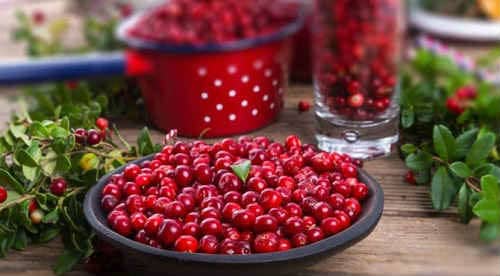

Useful lingonberries

